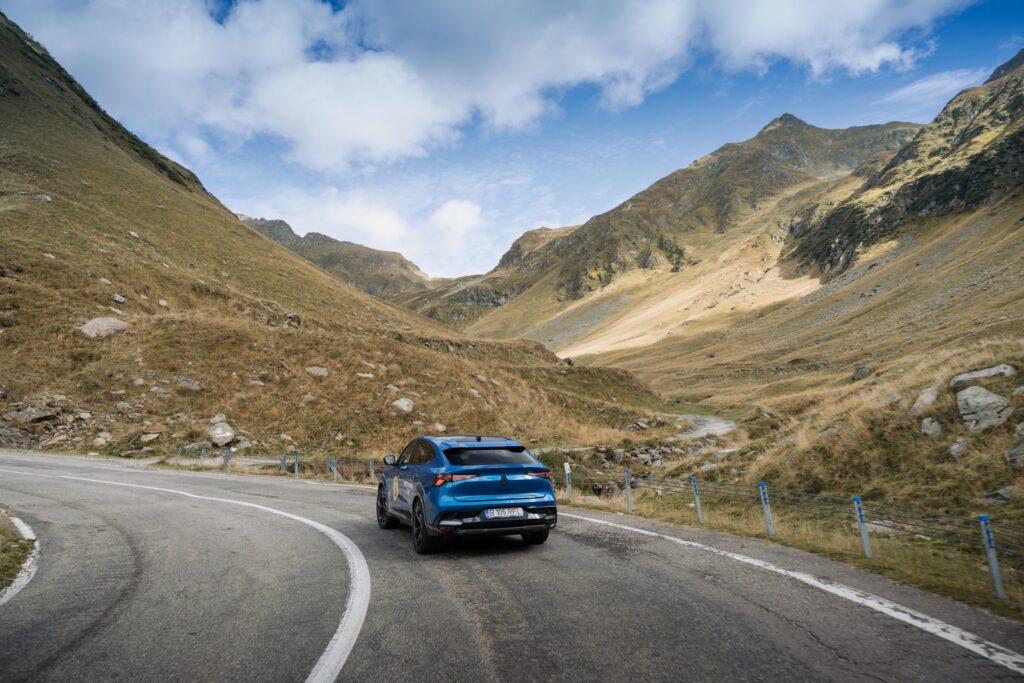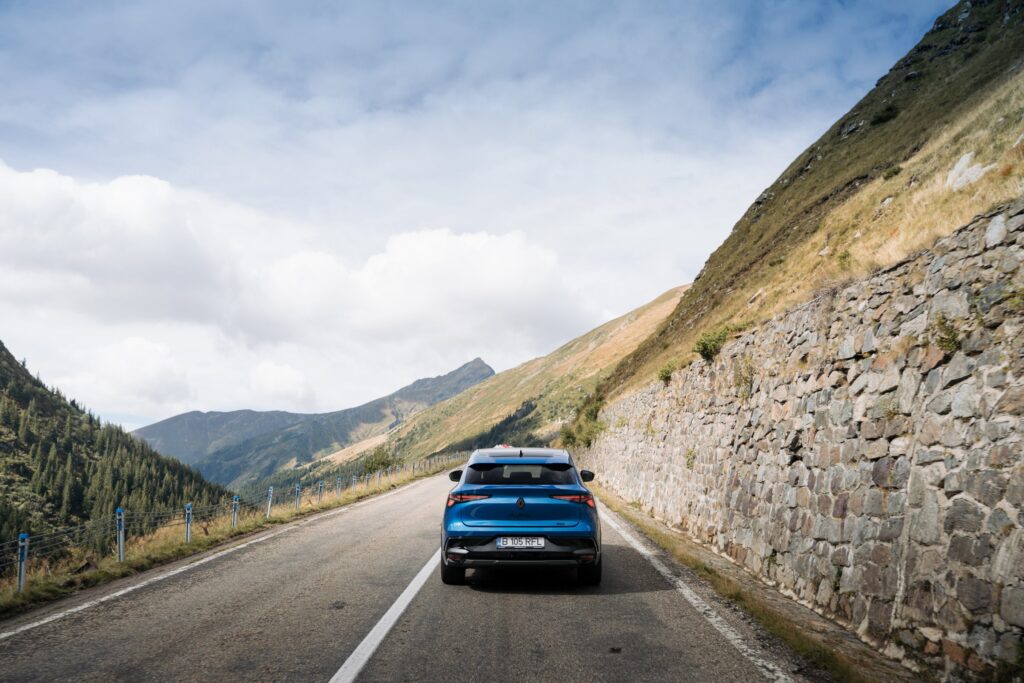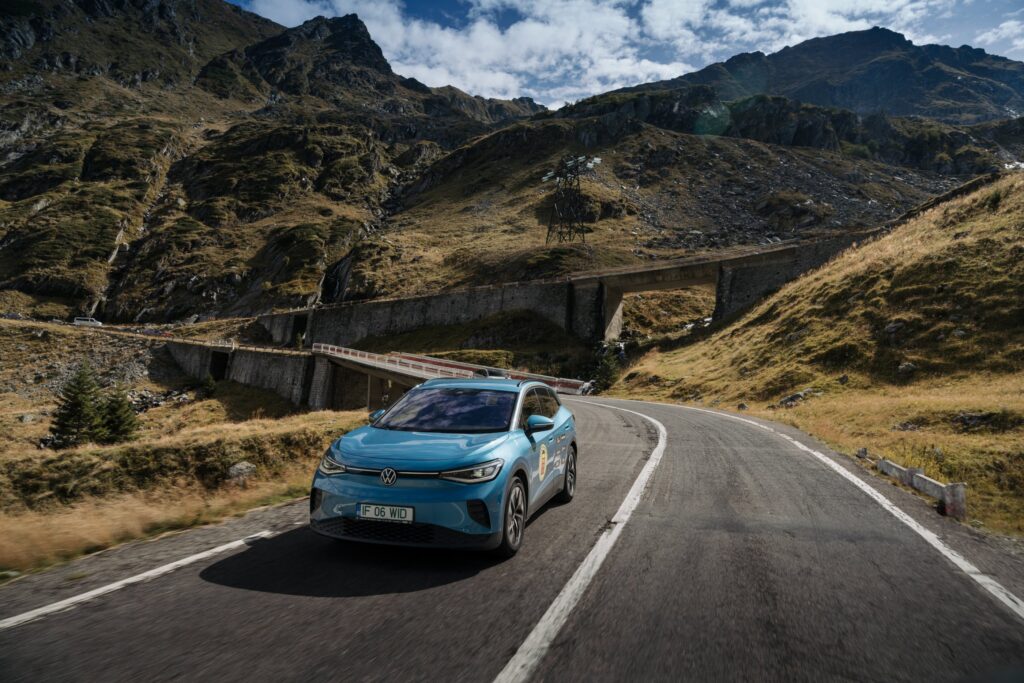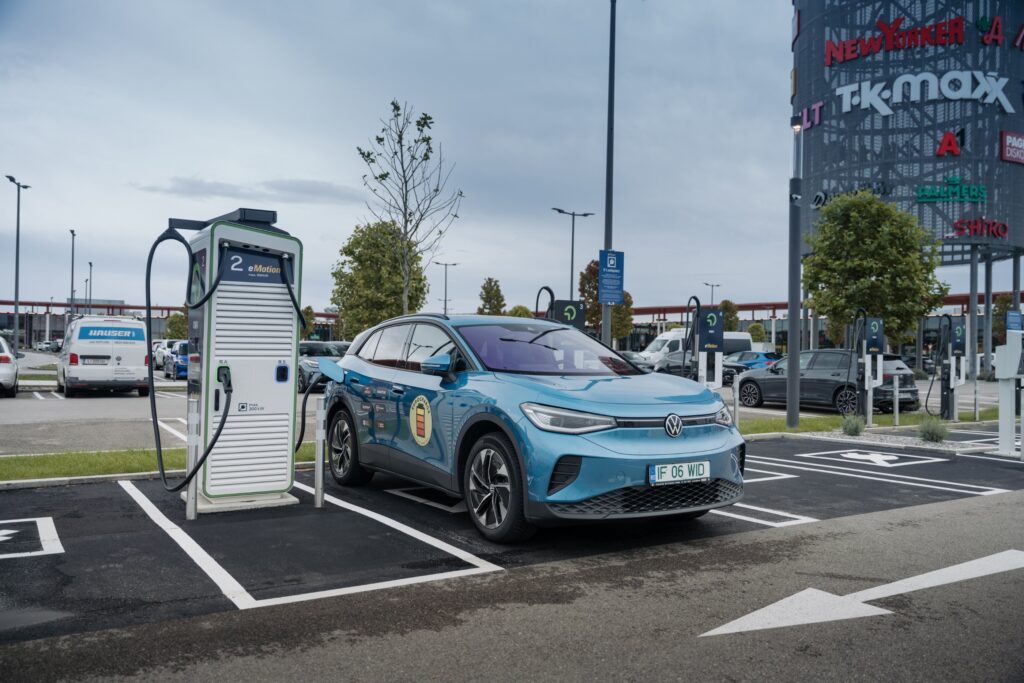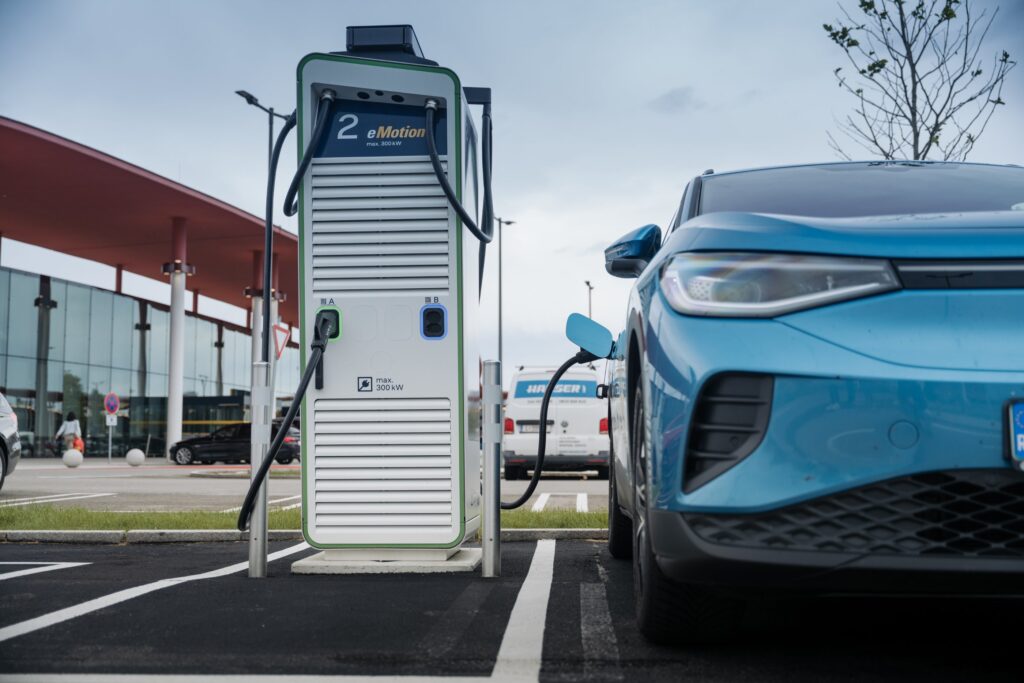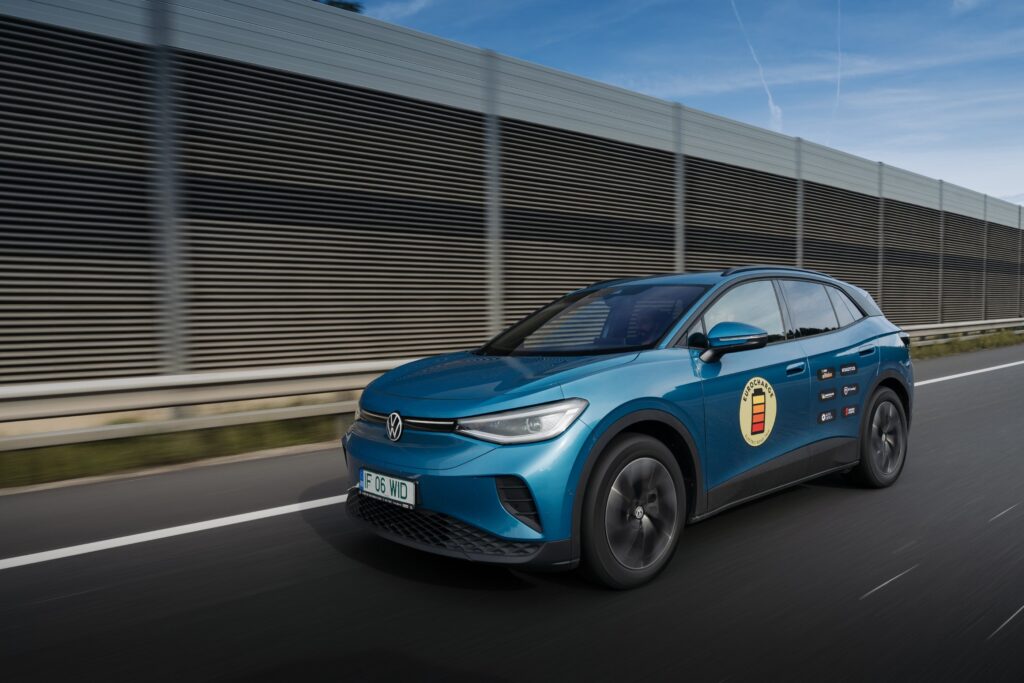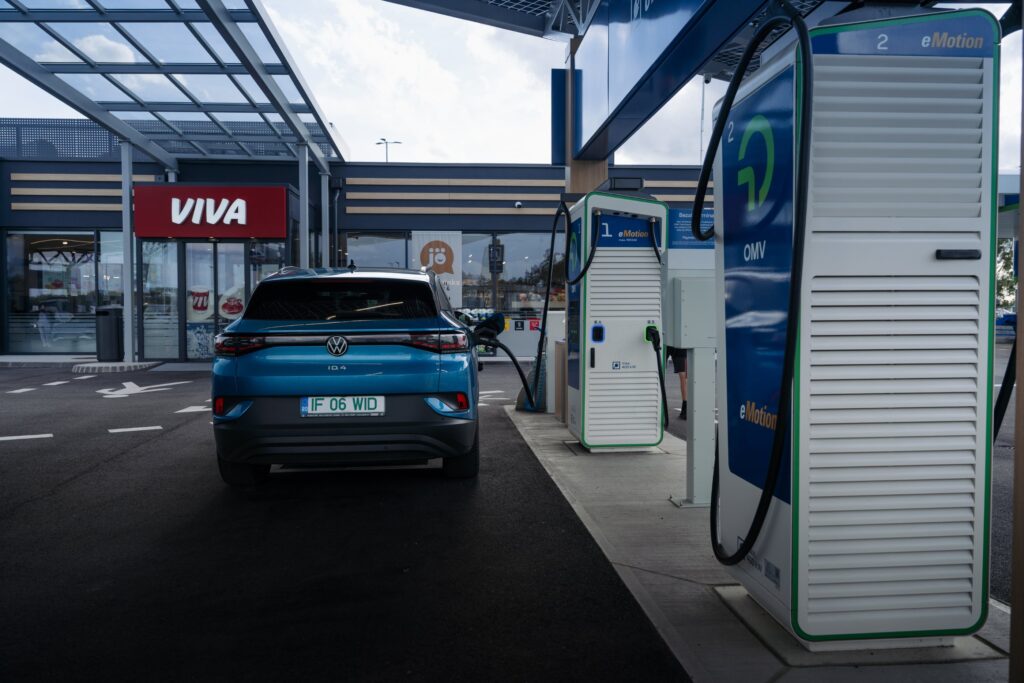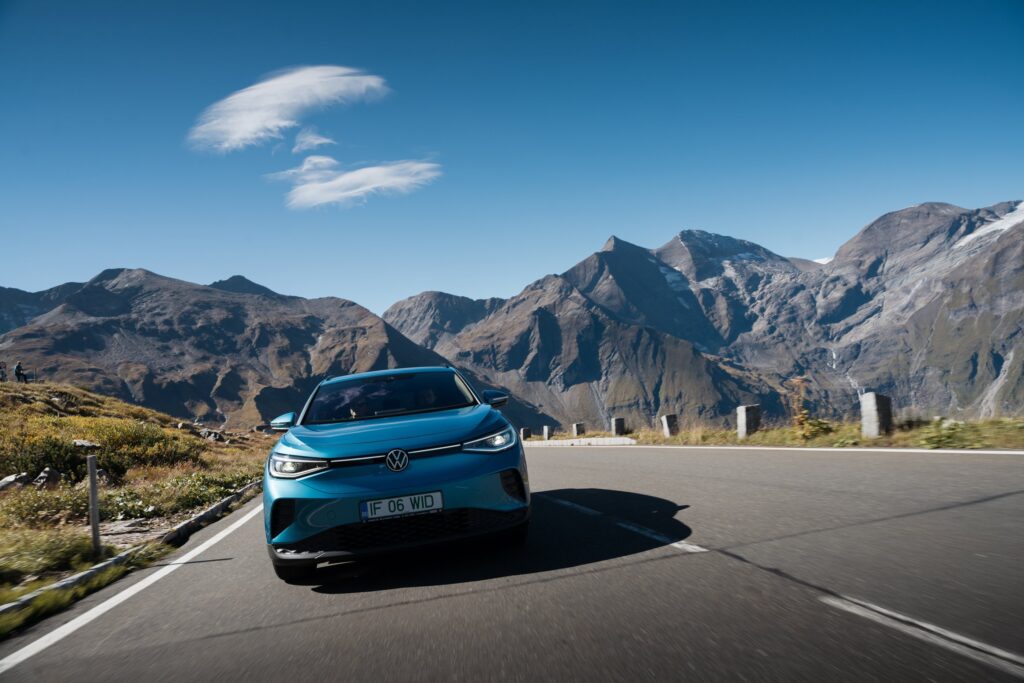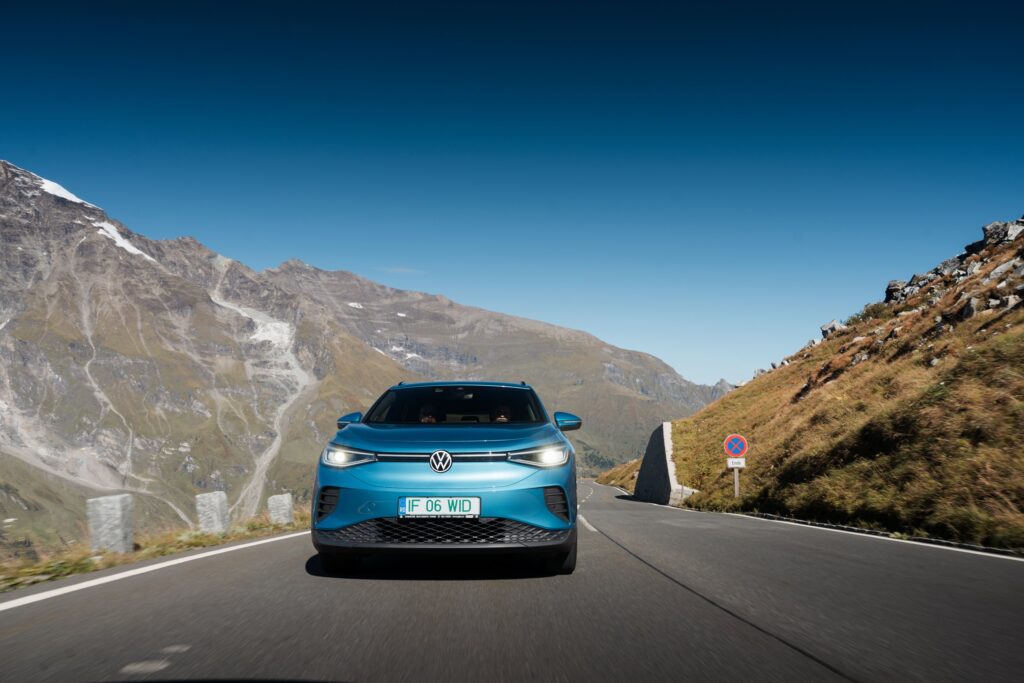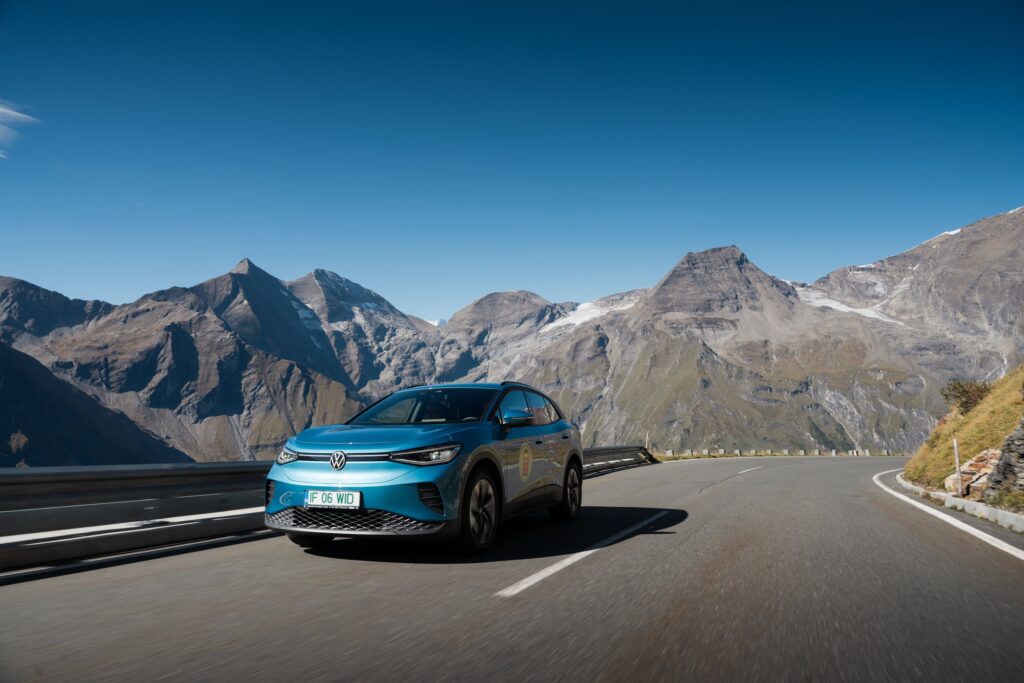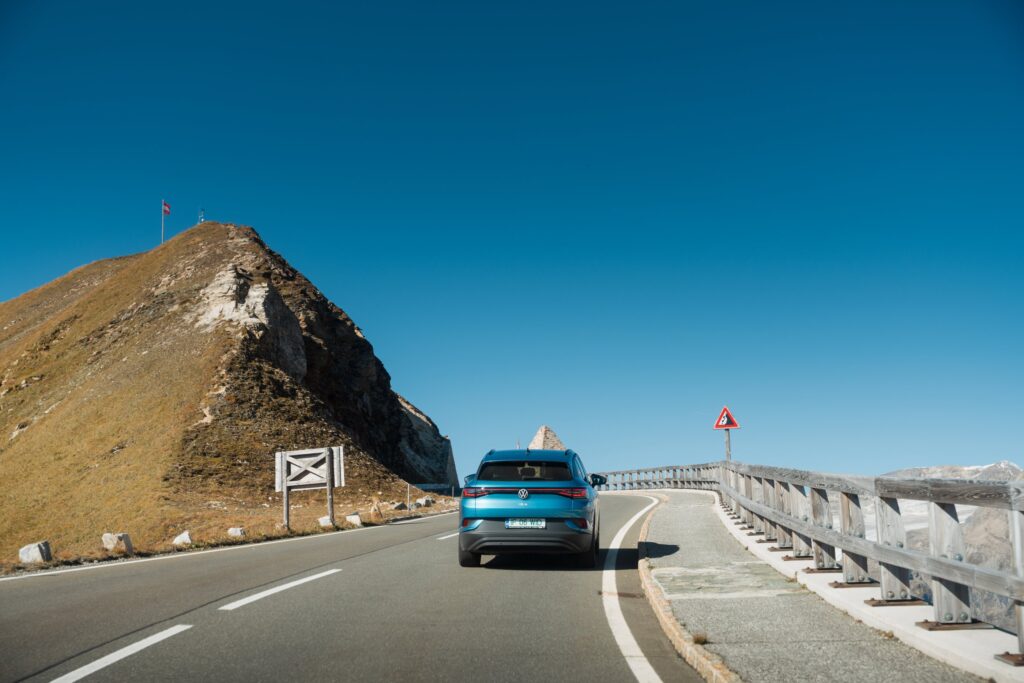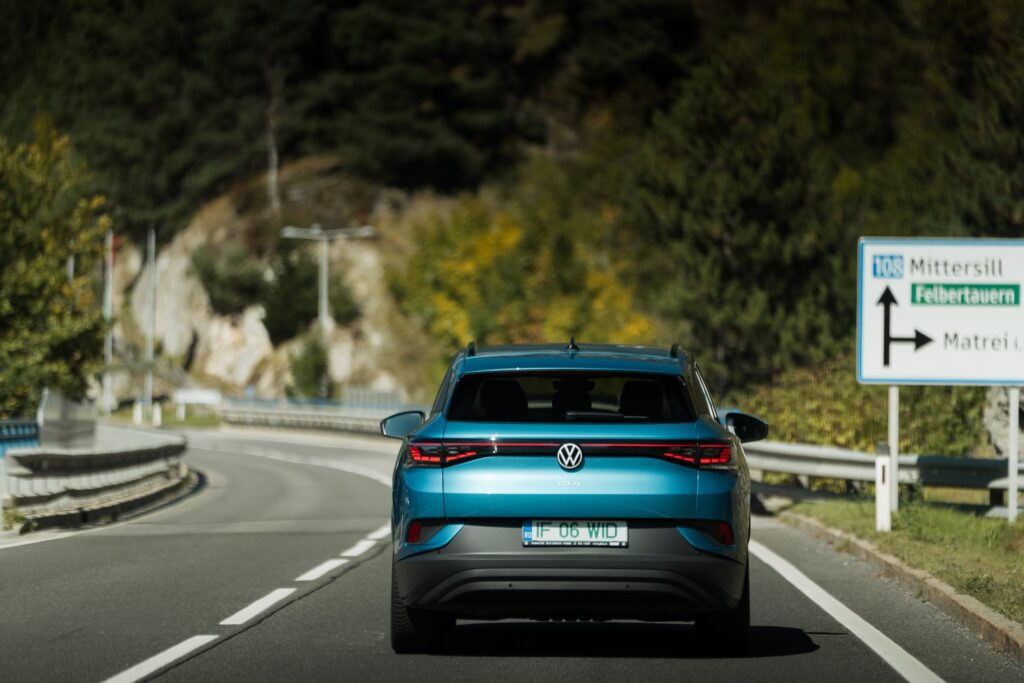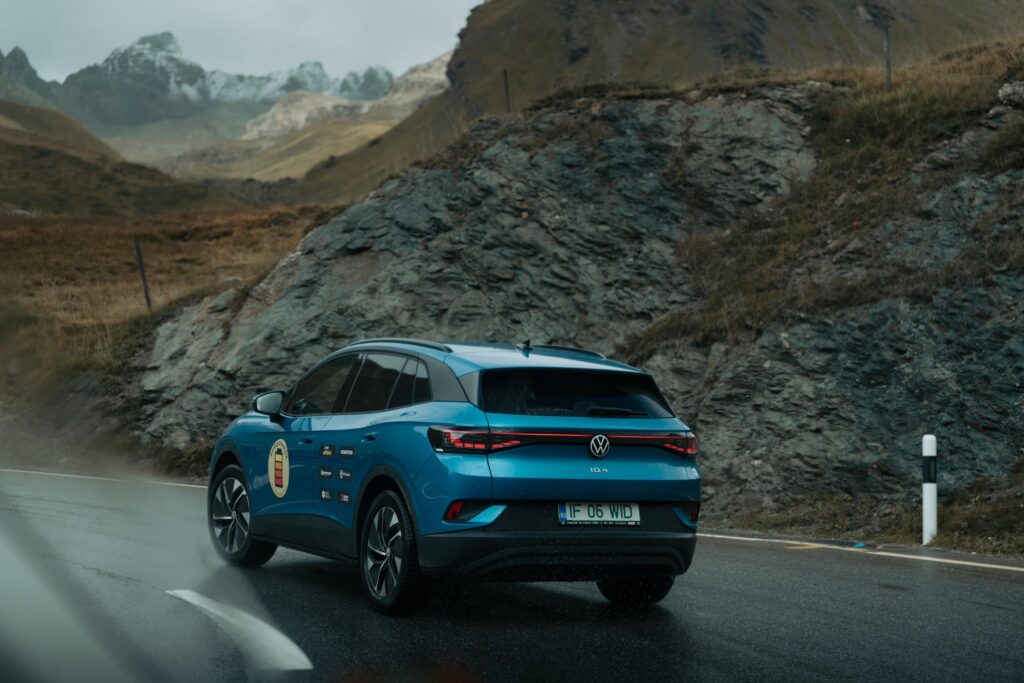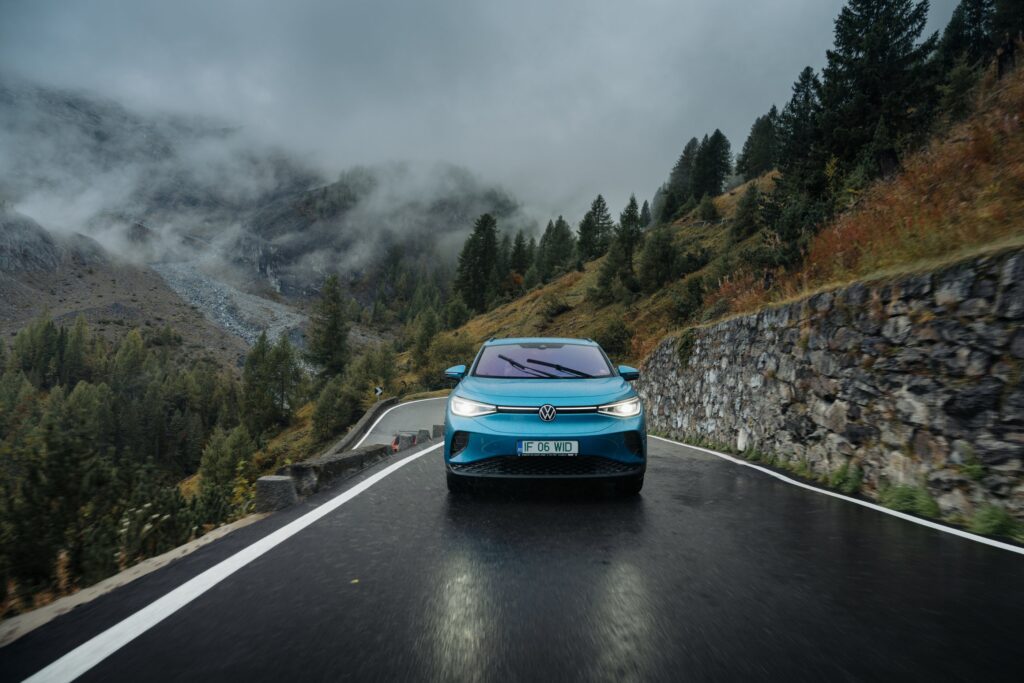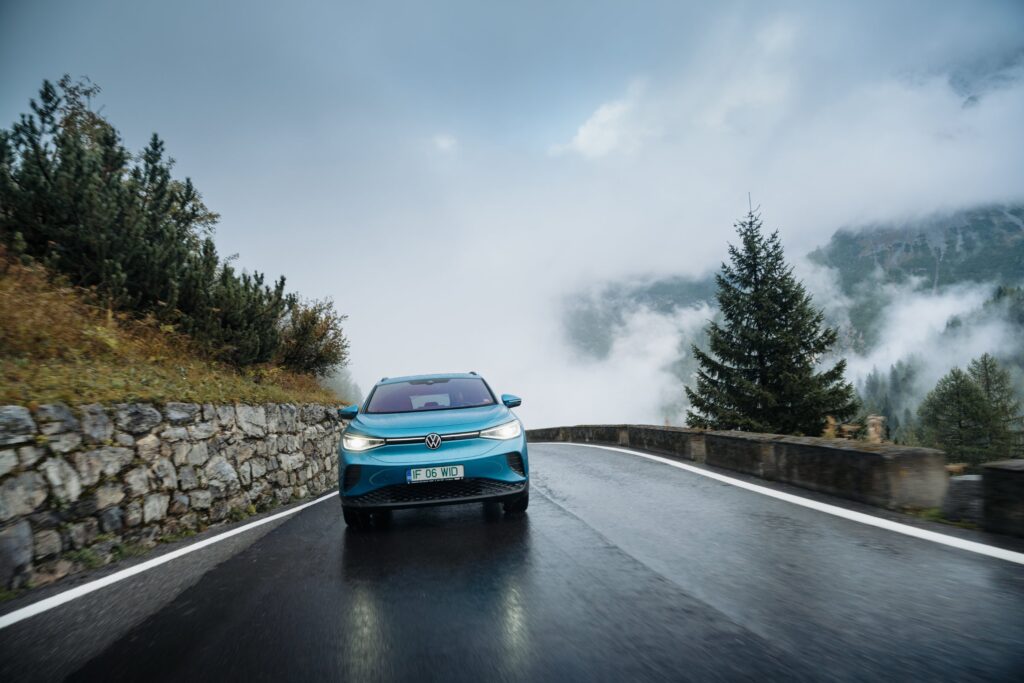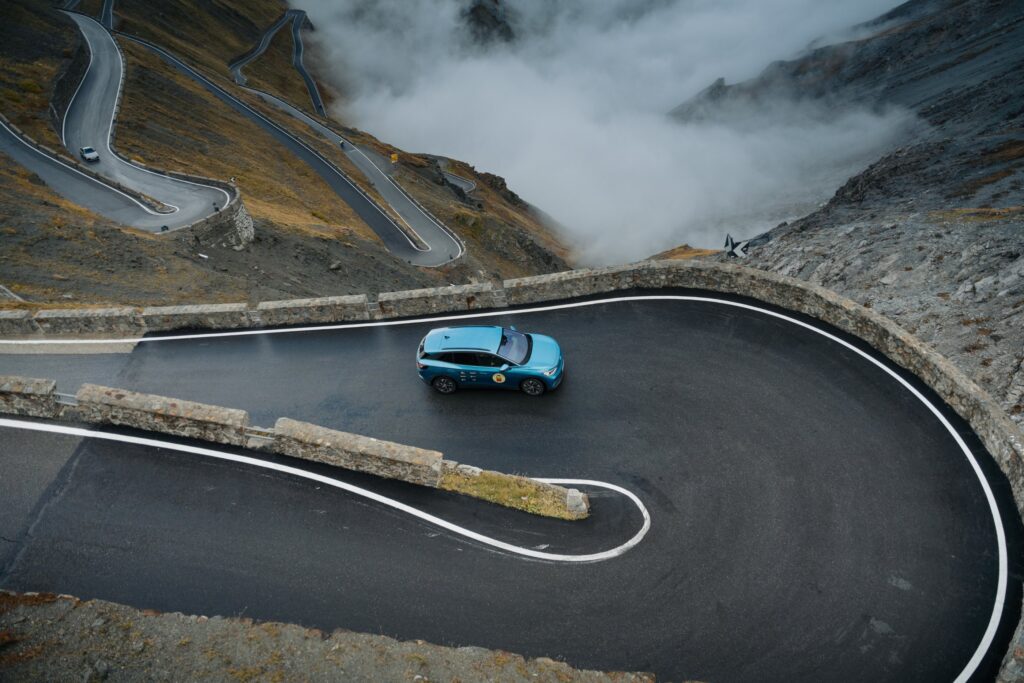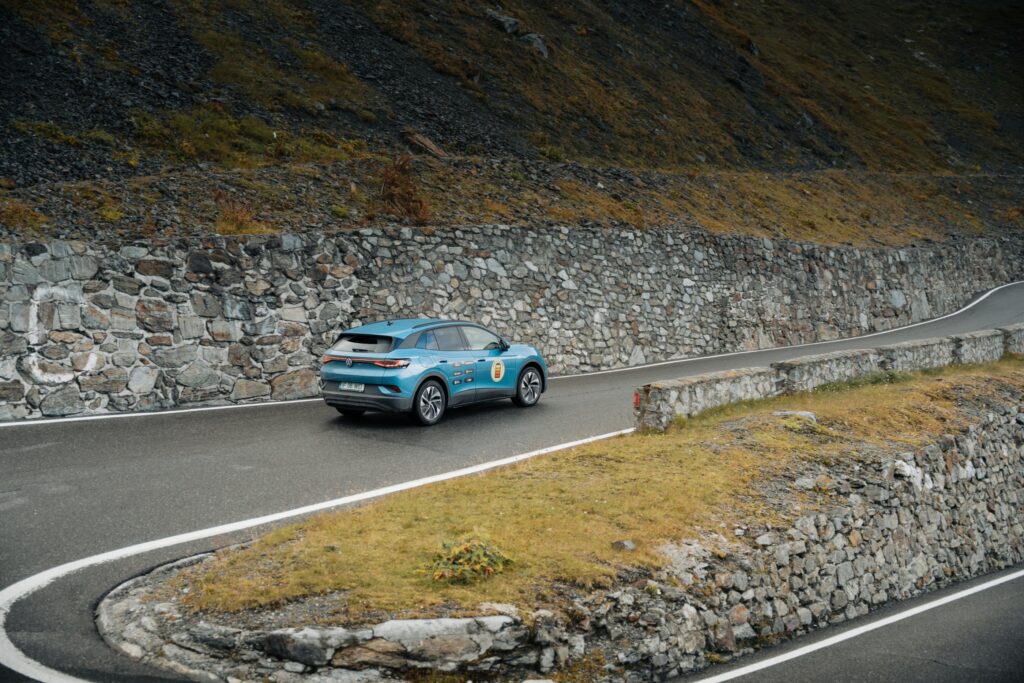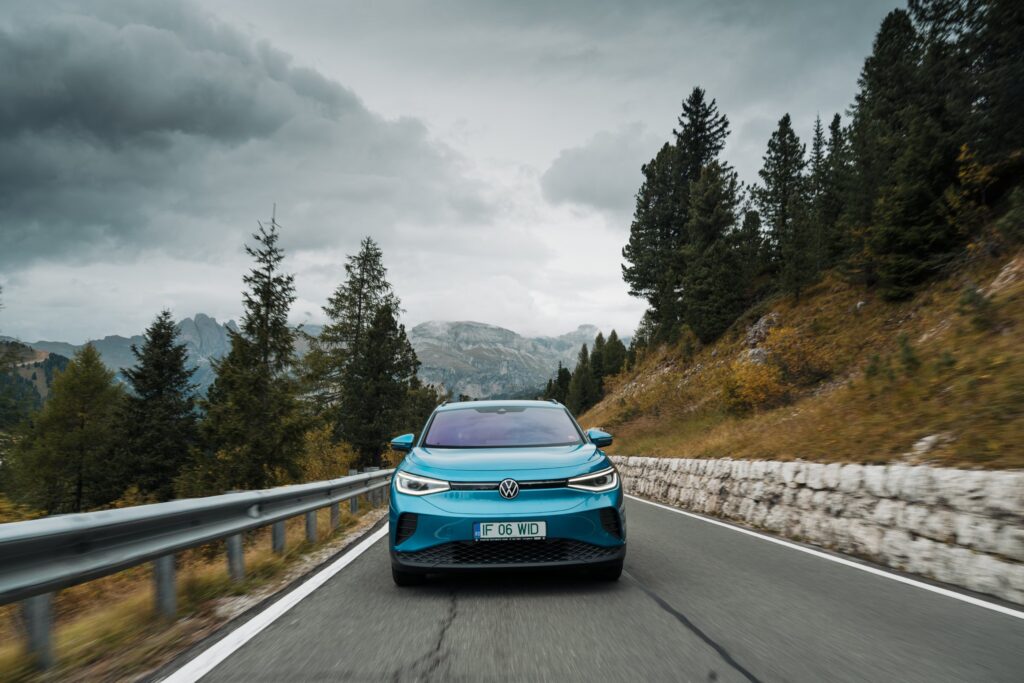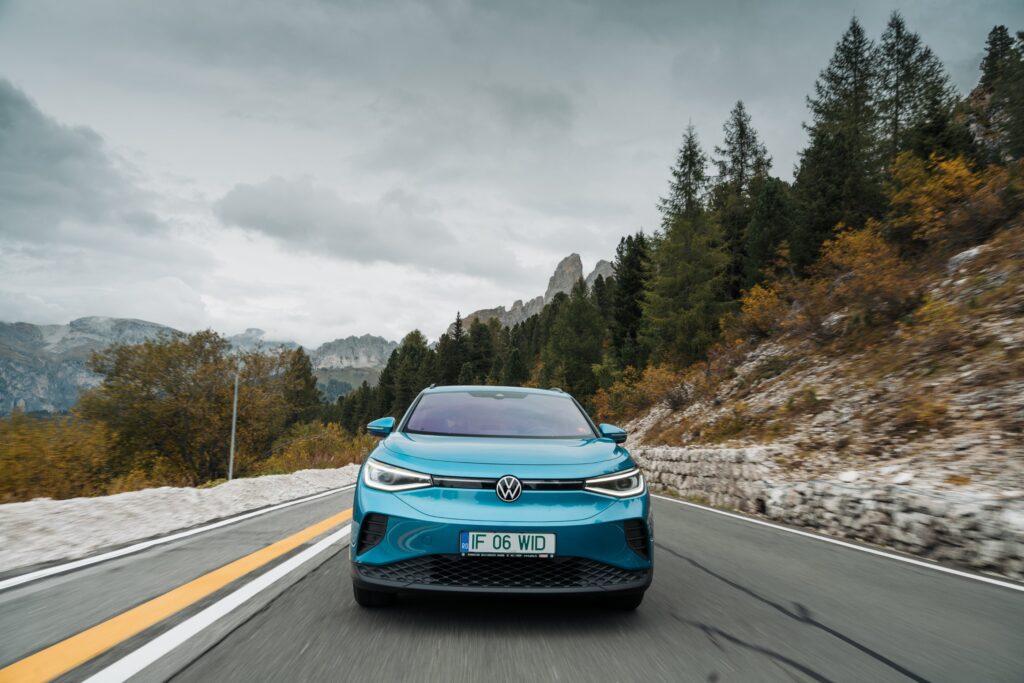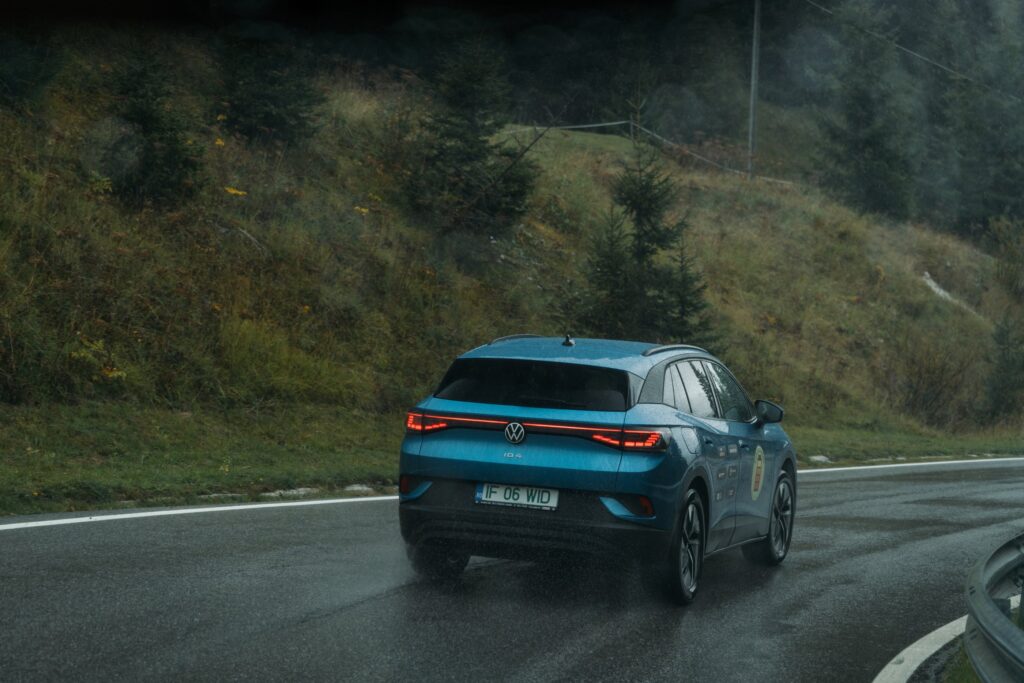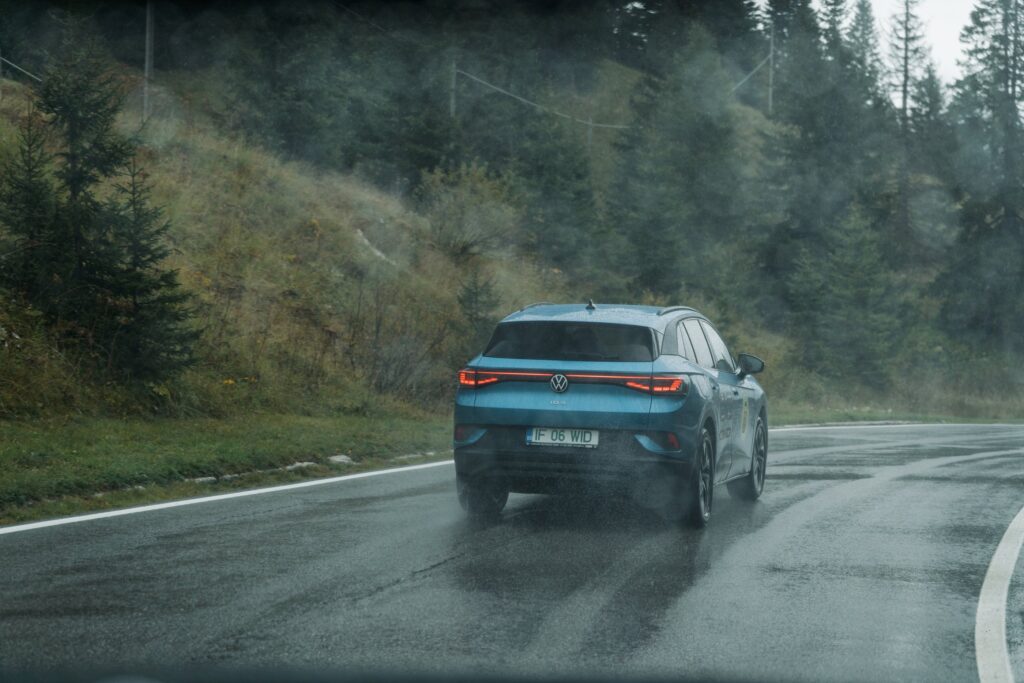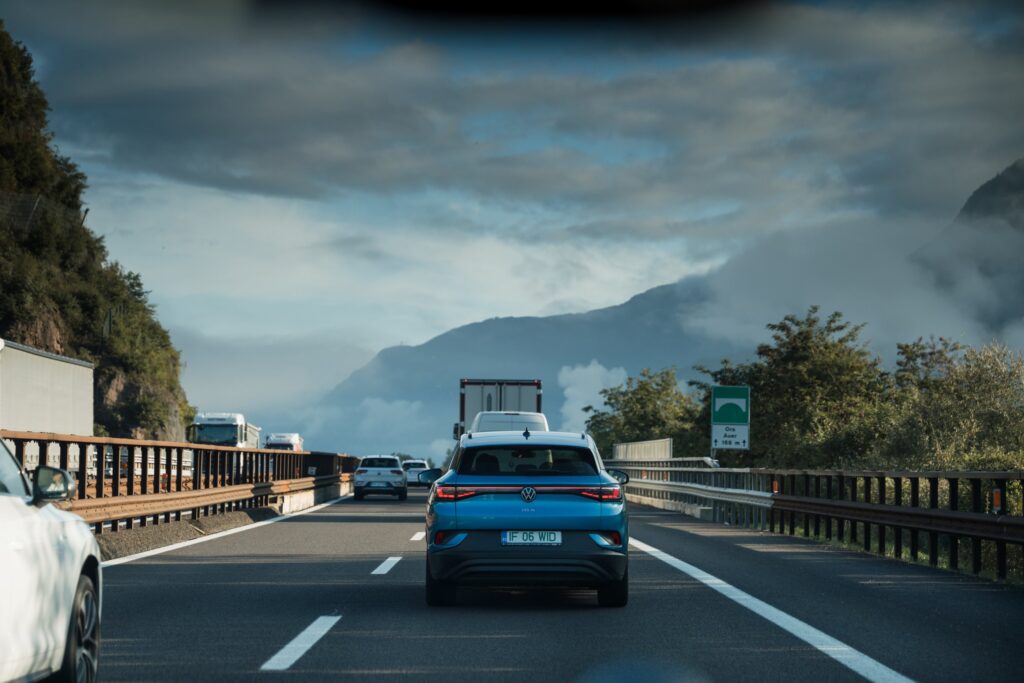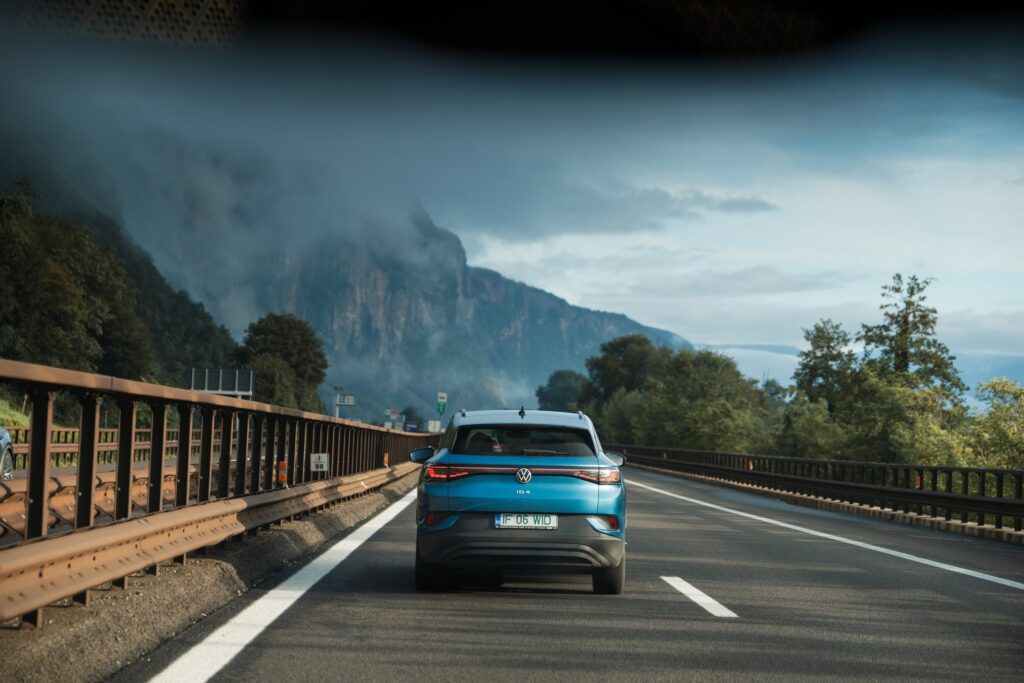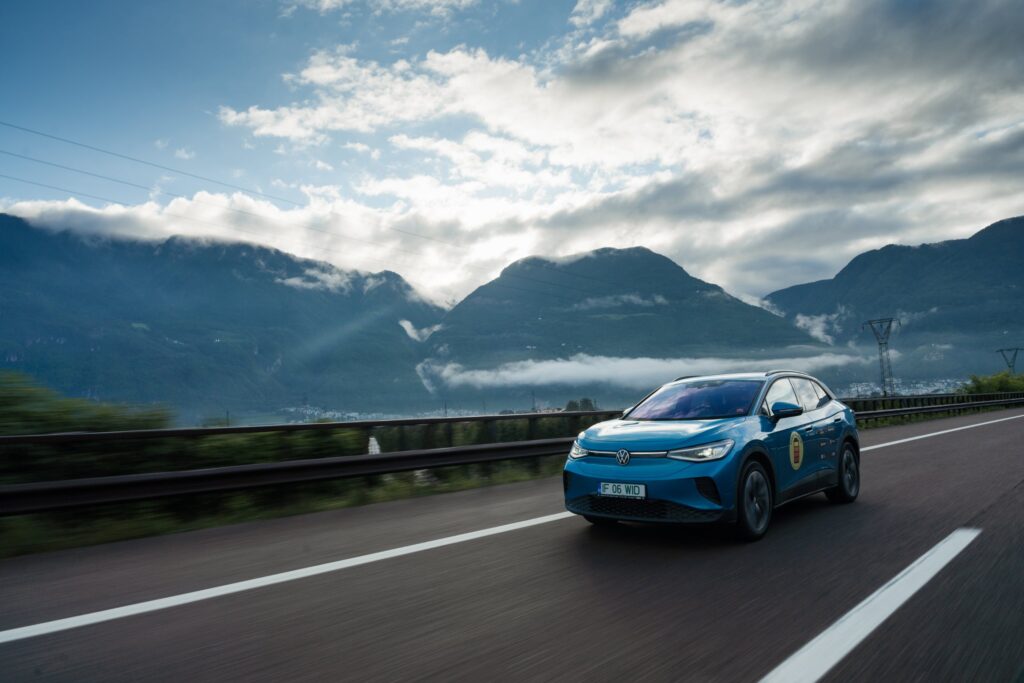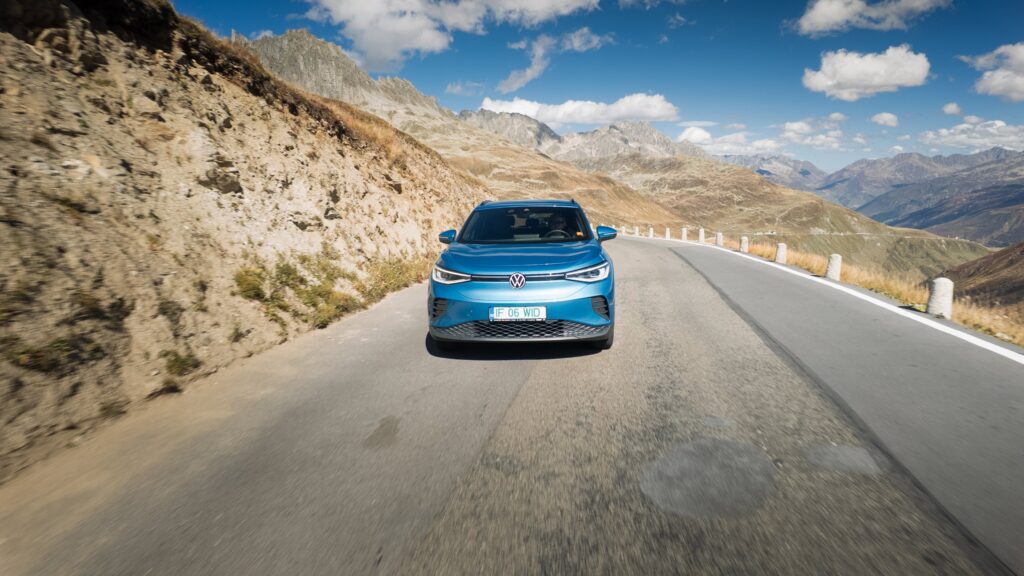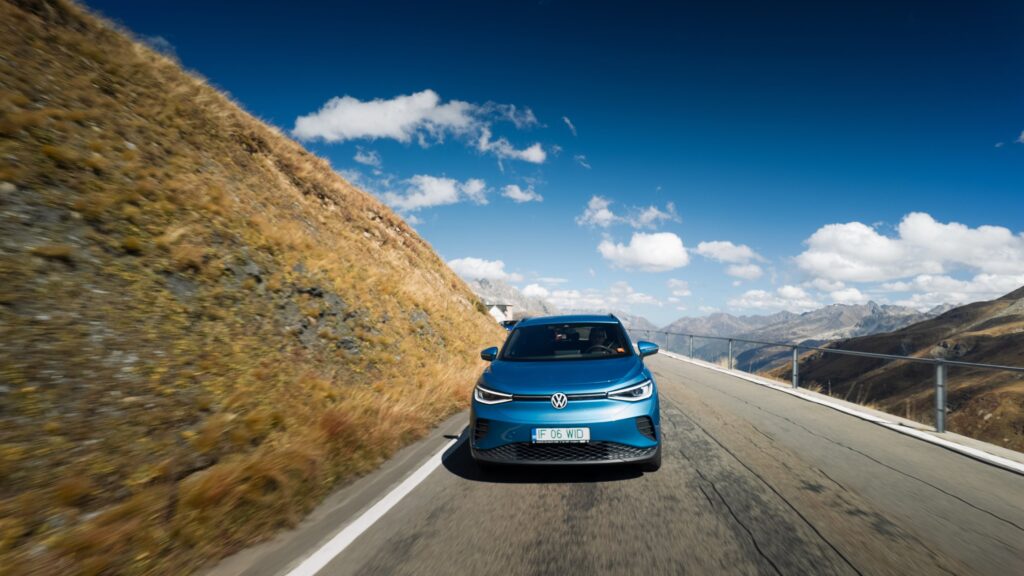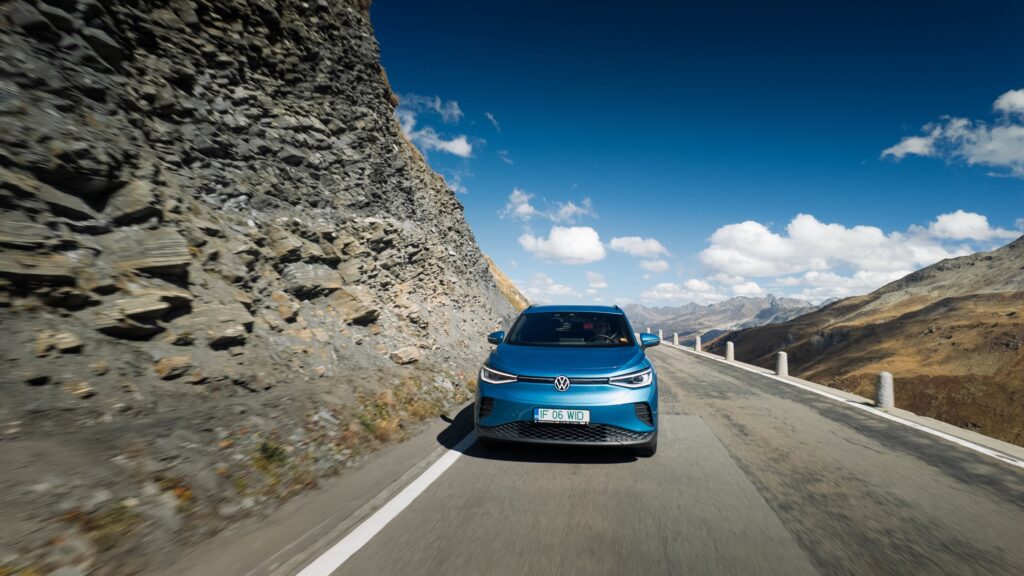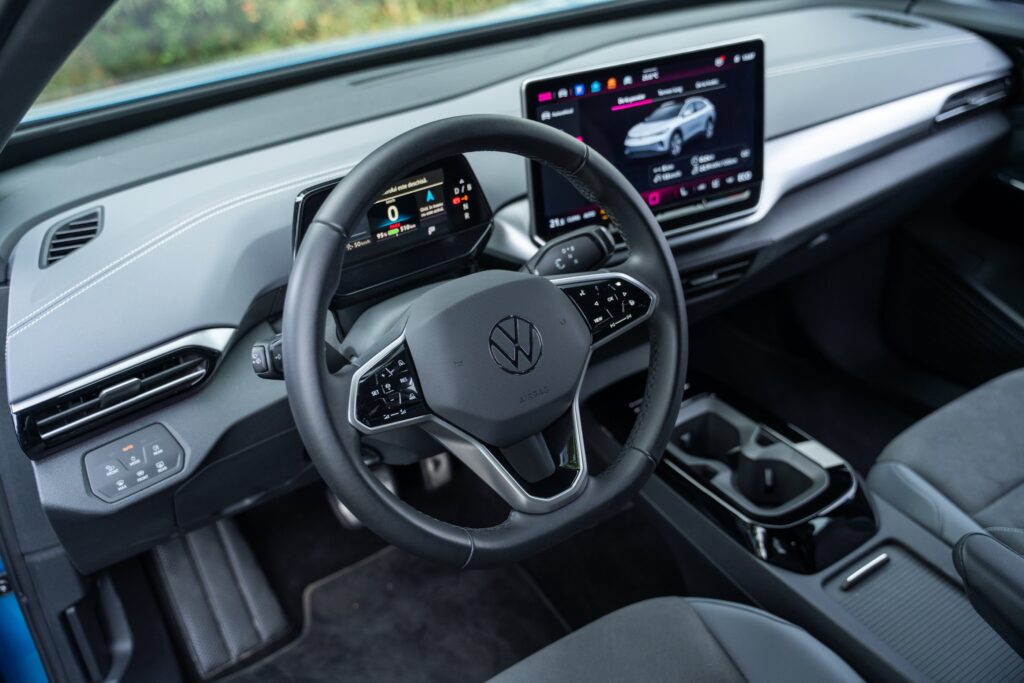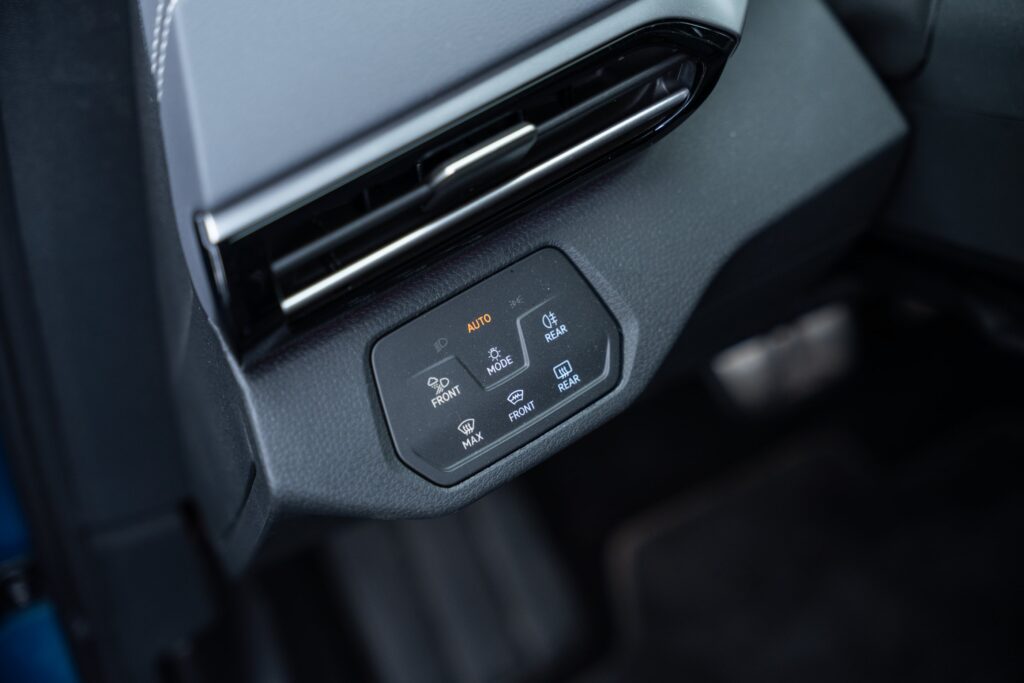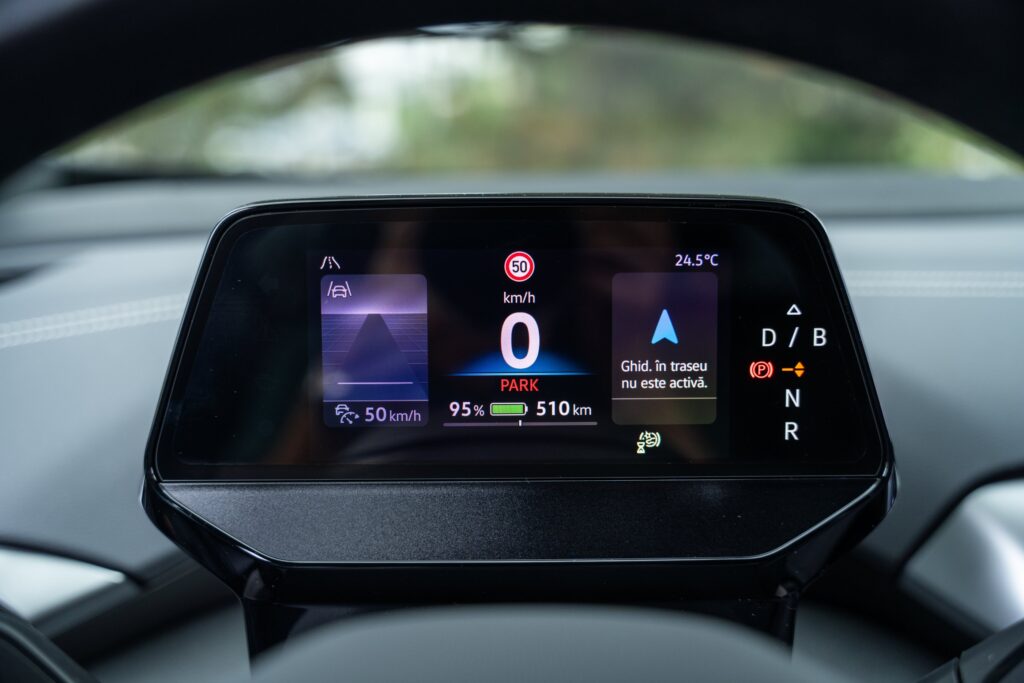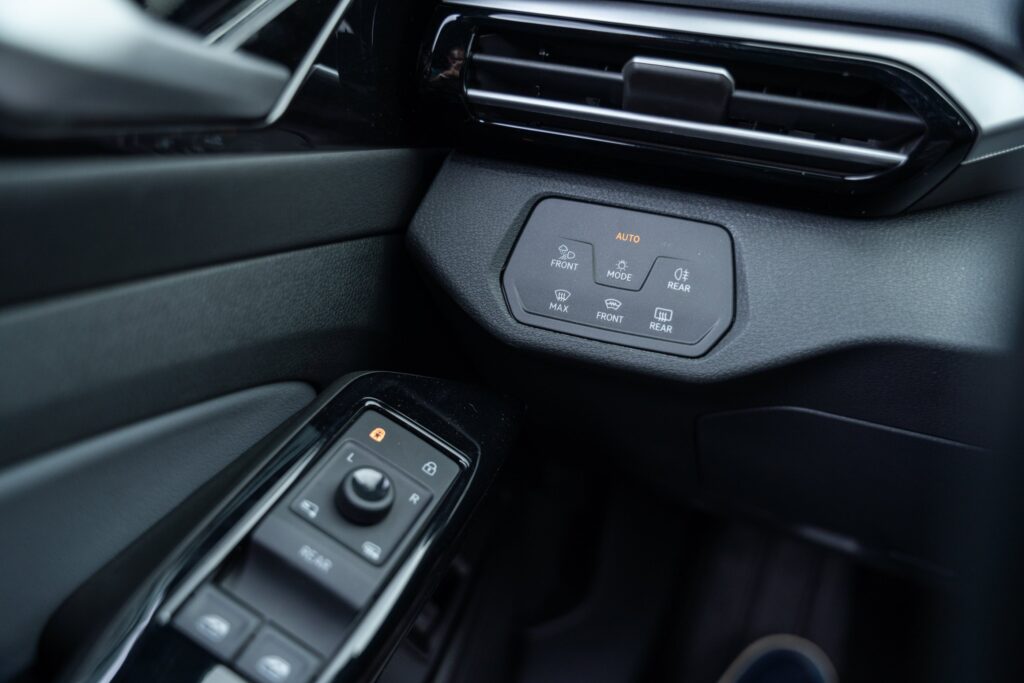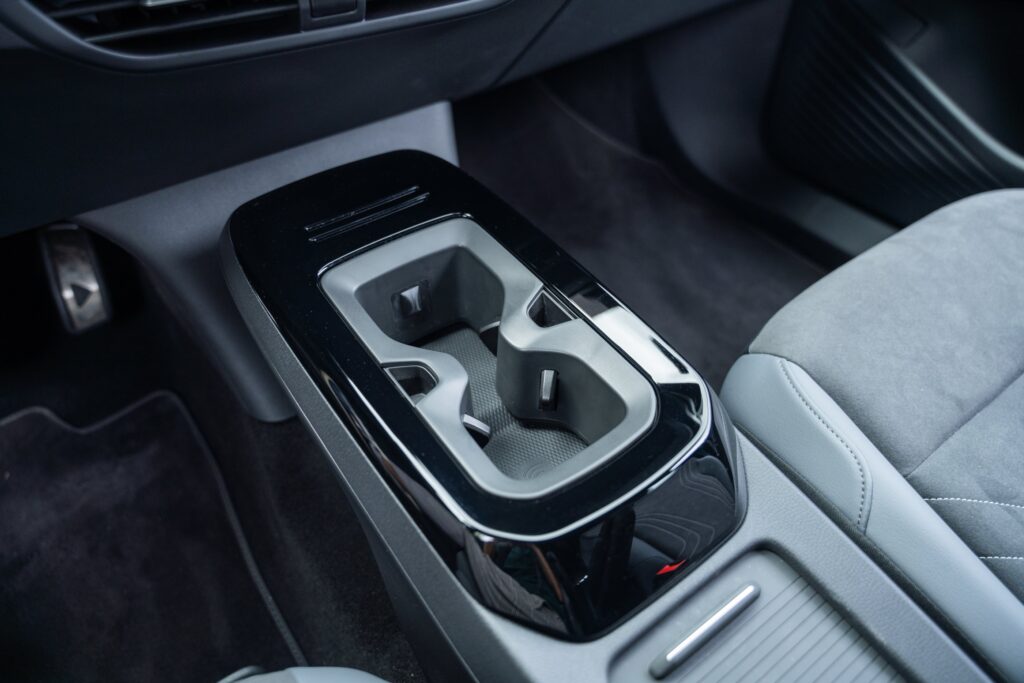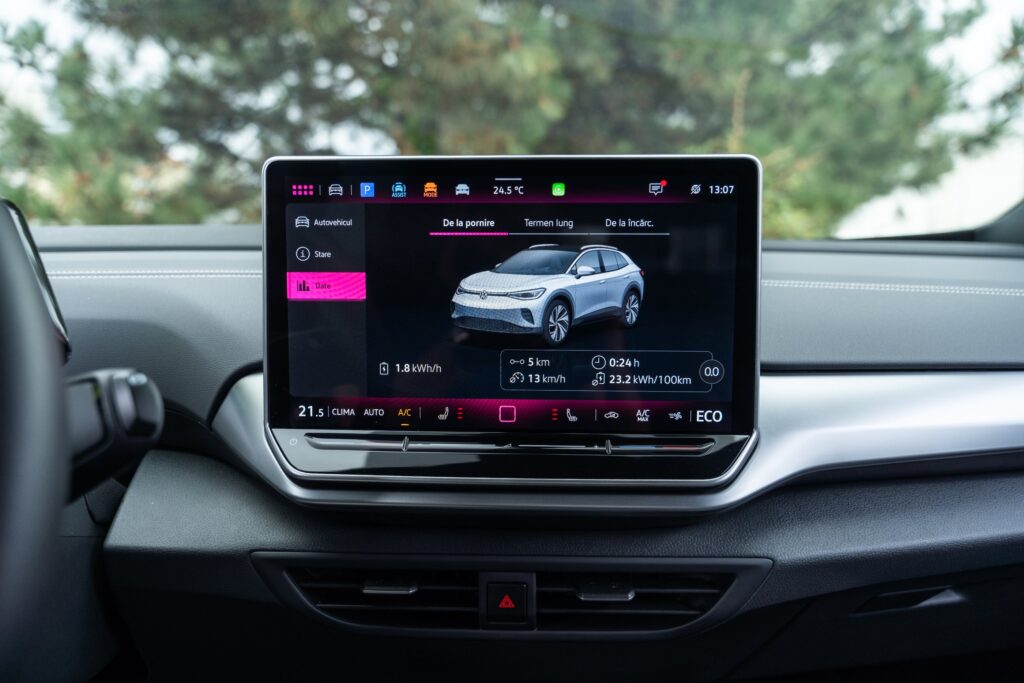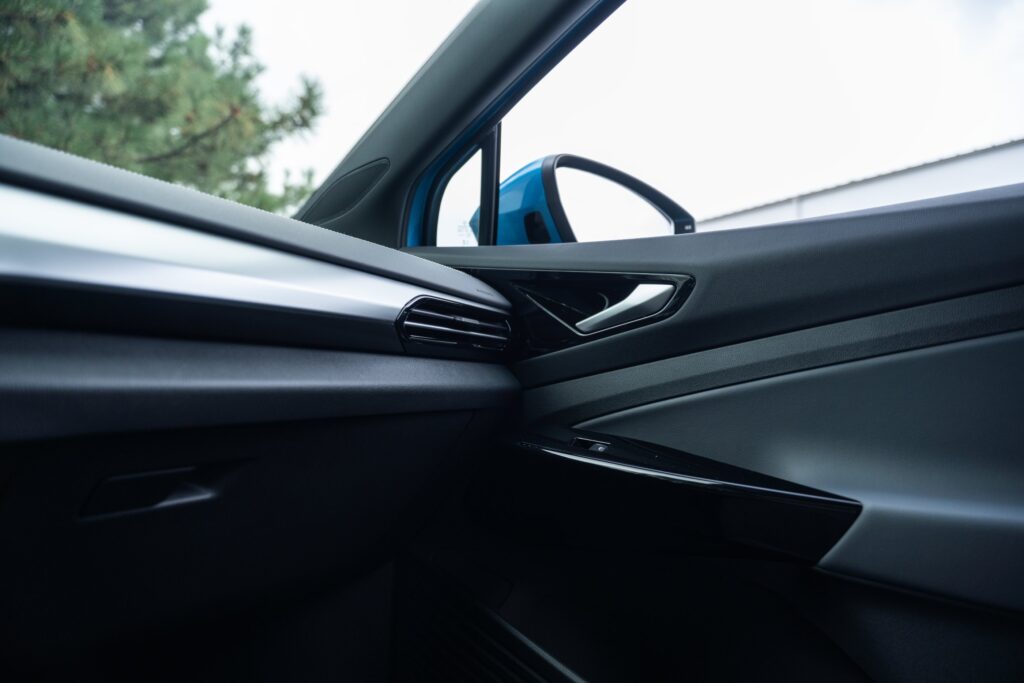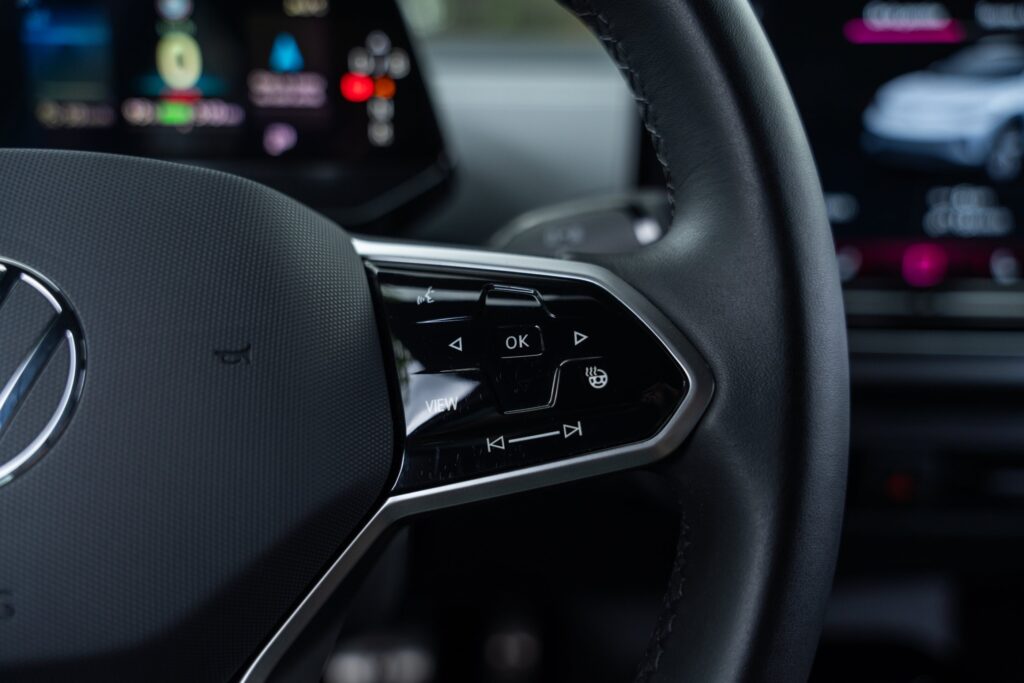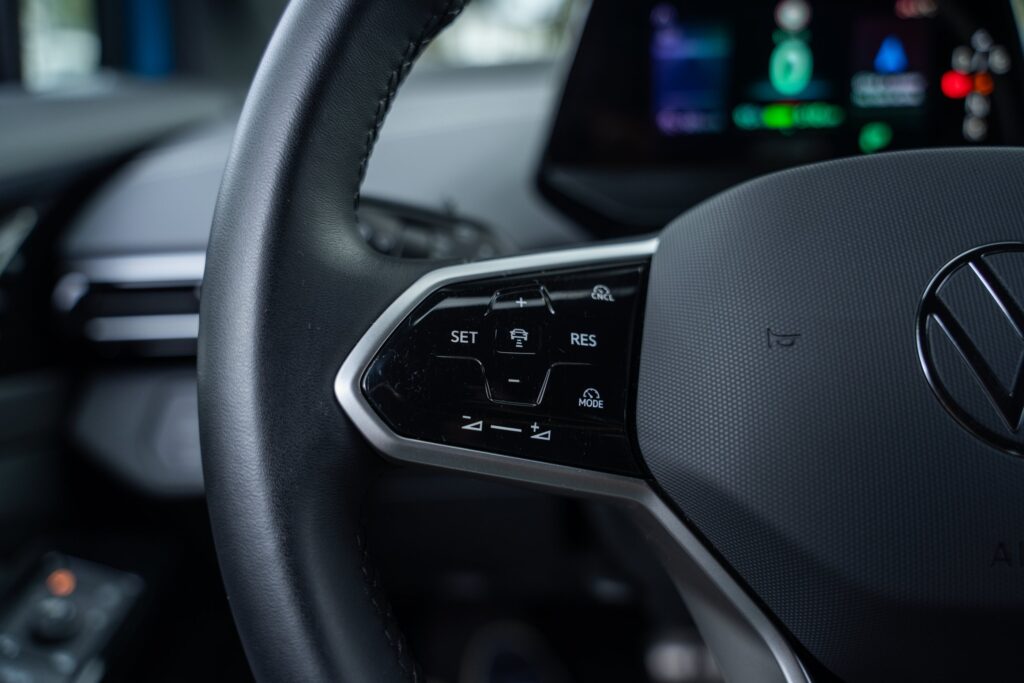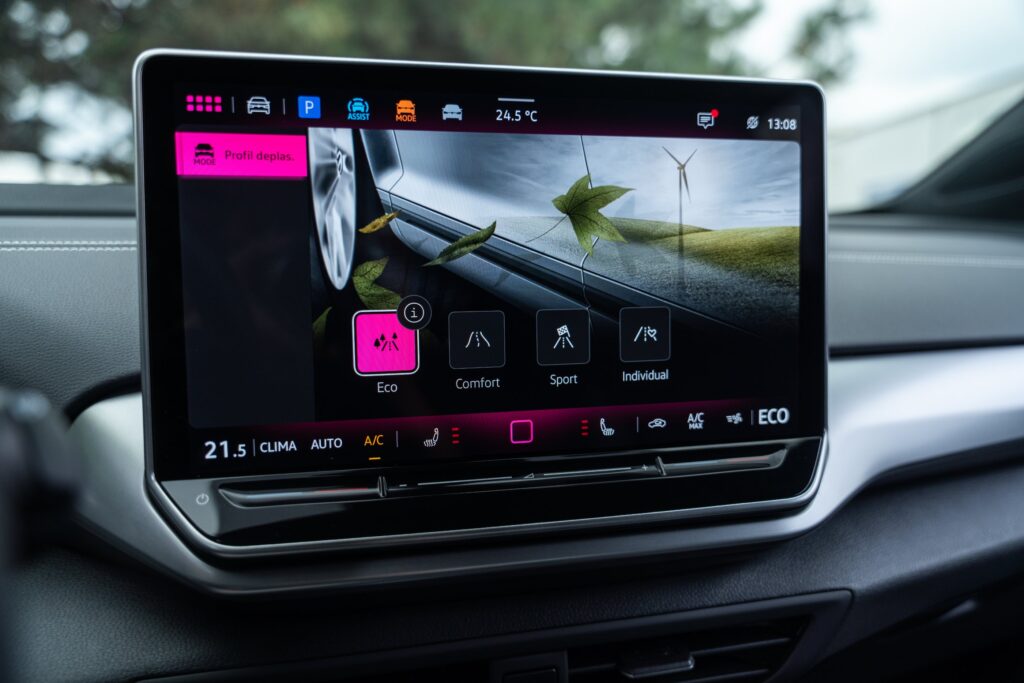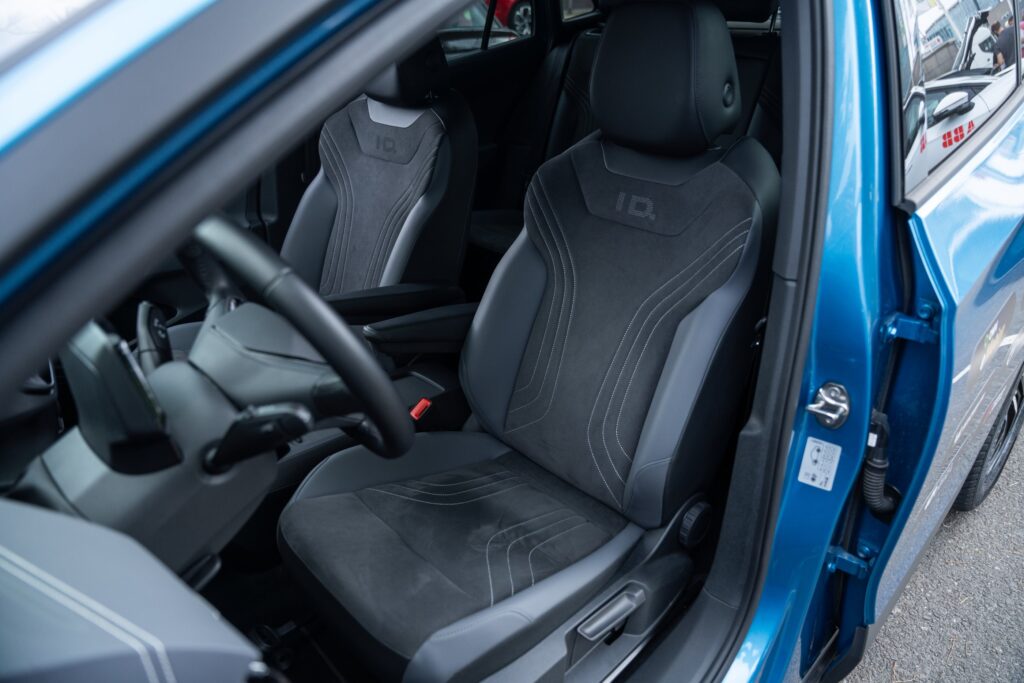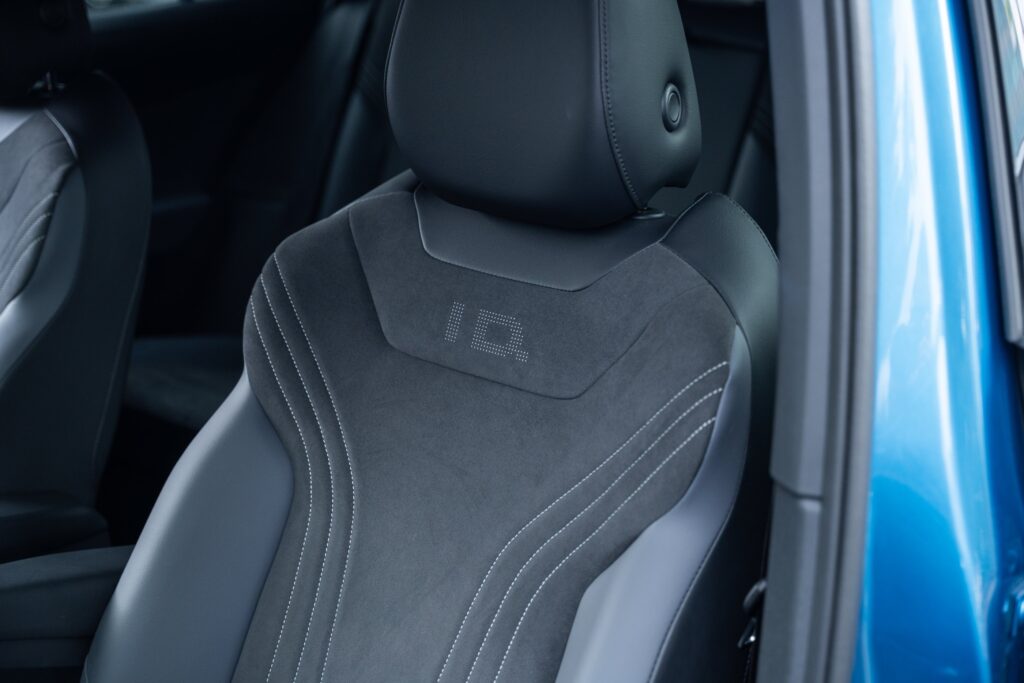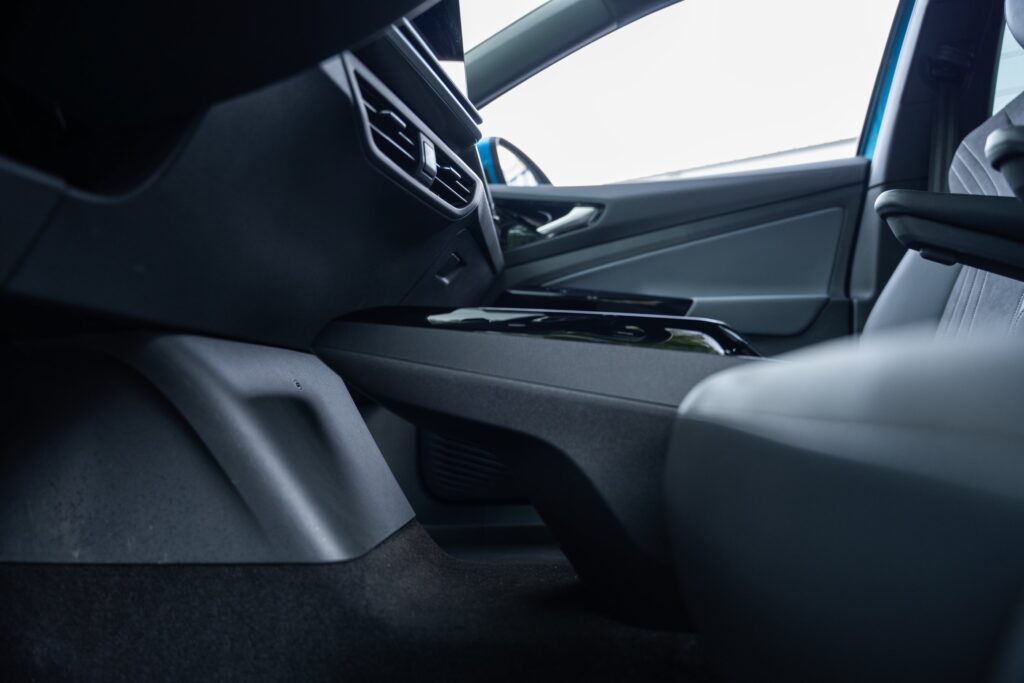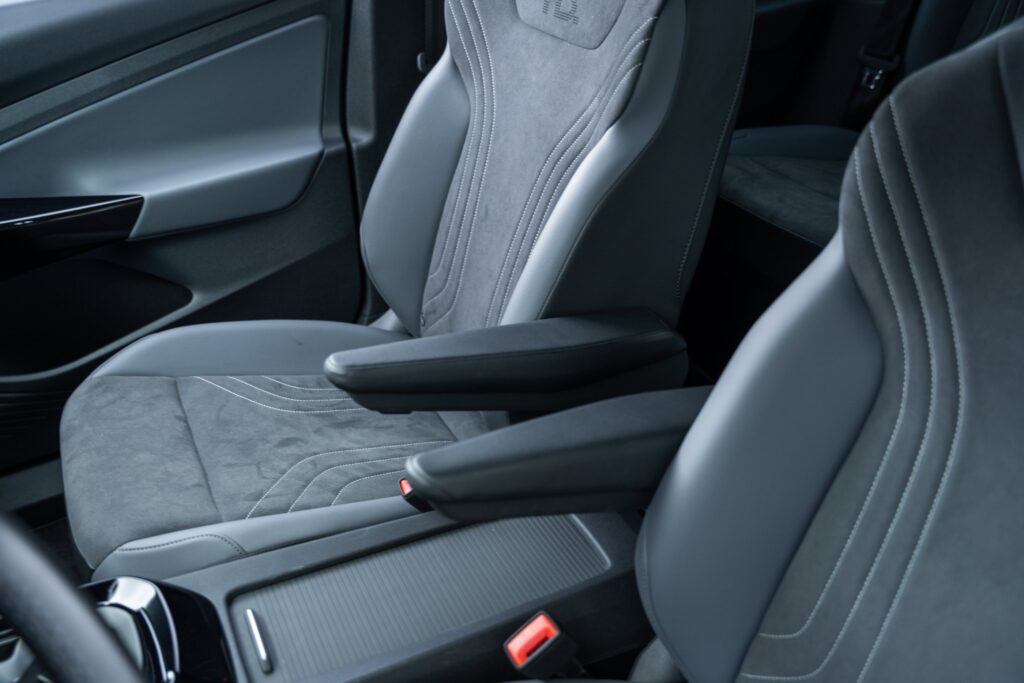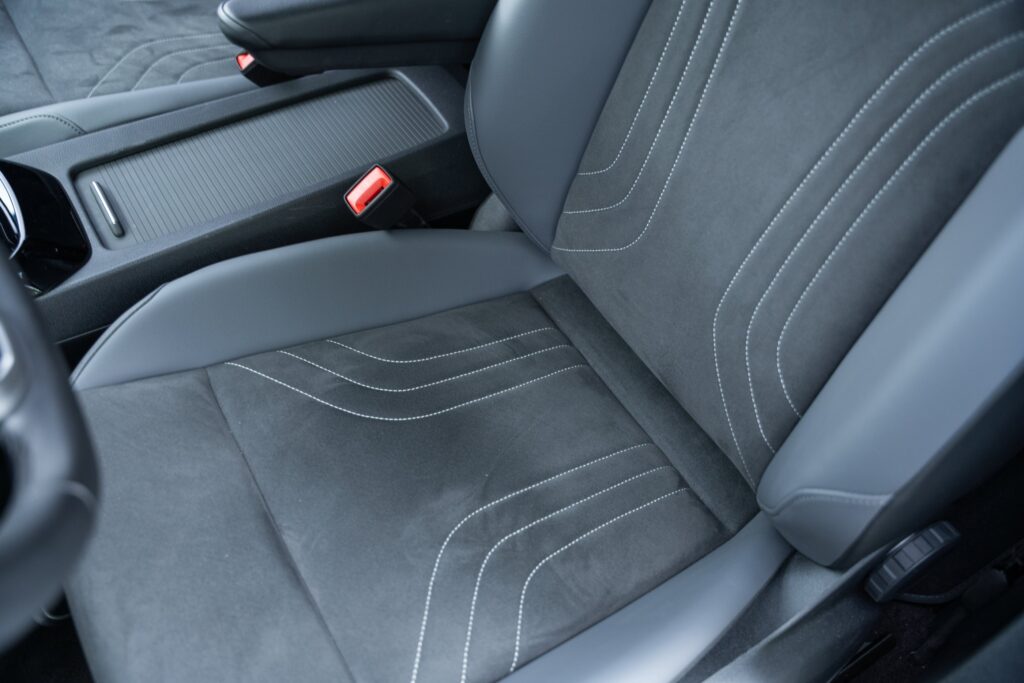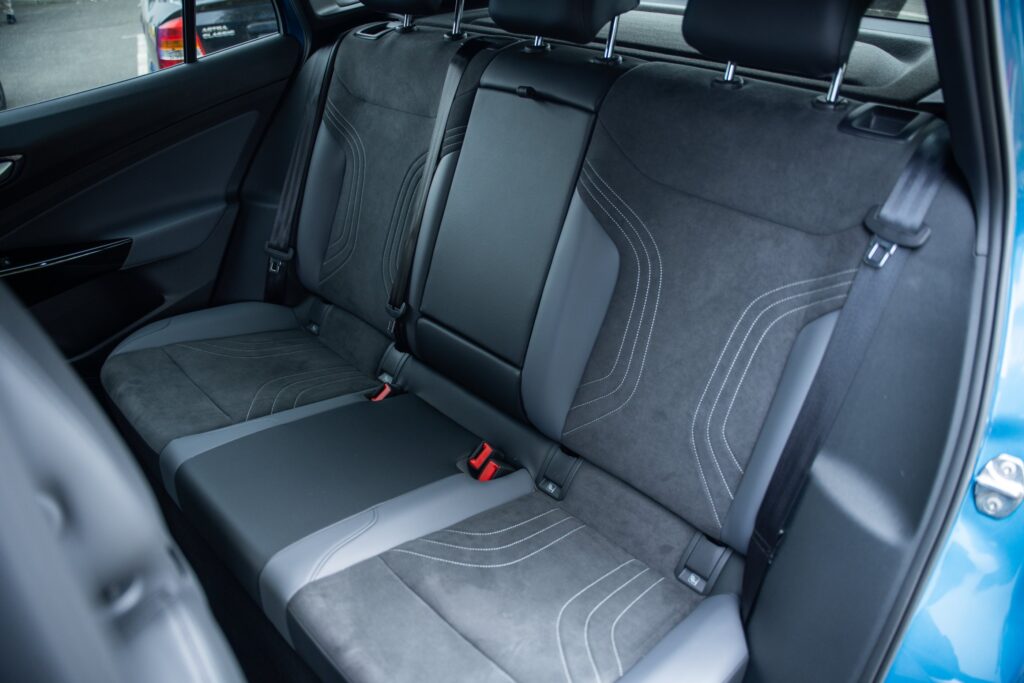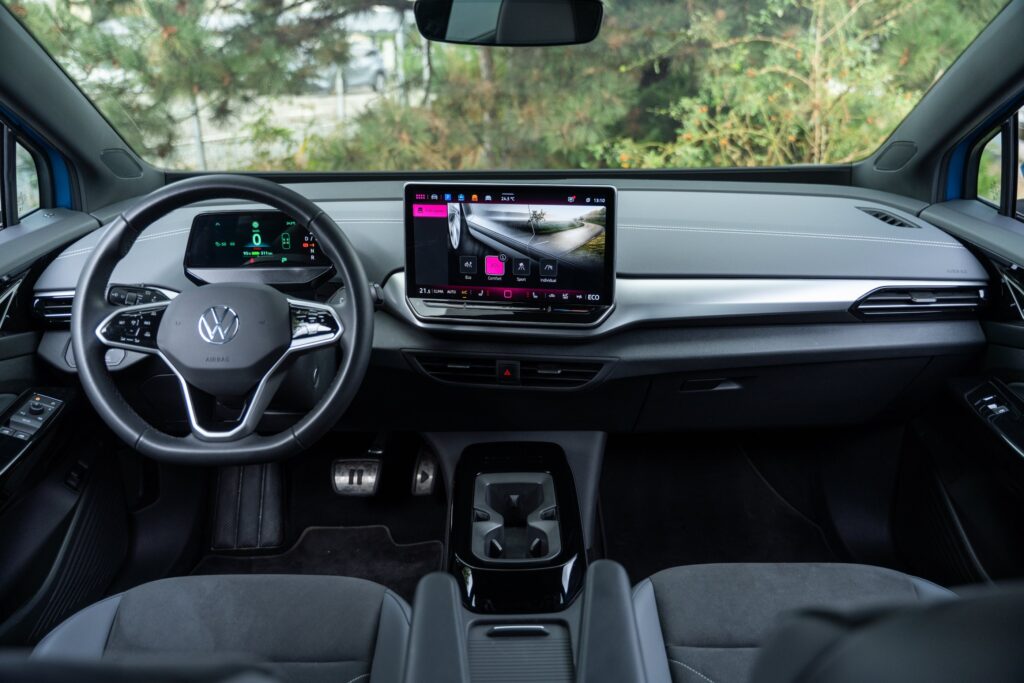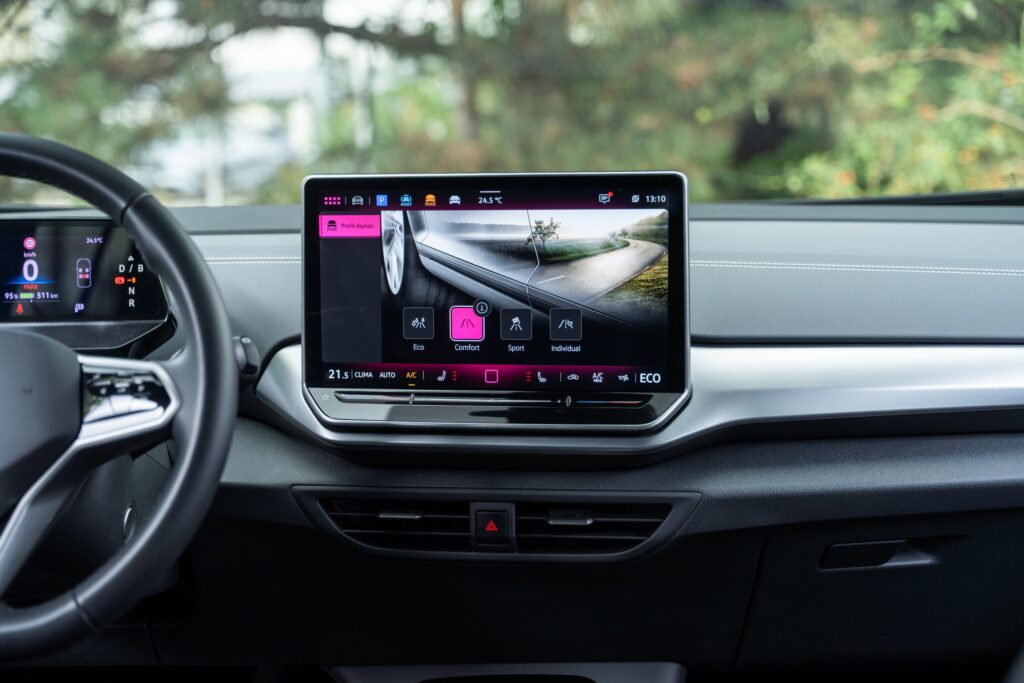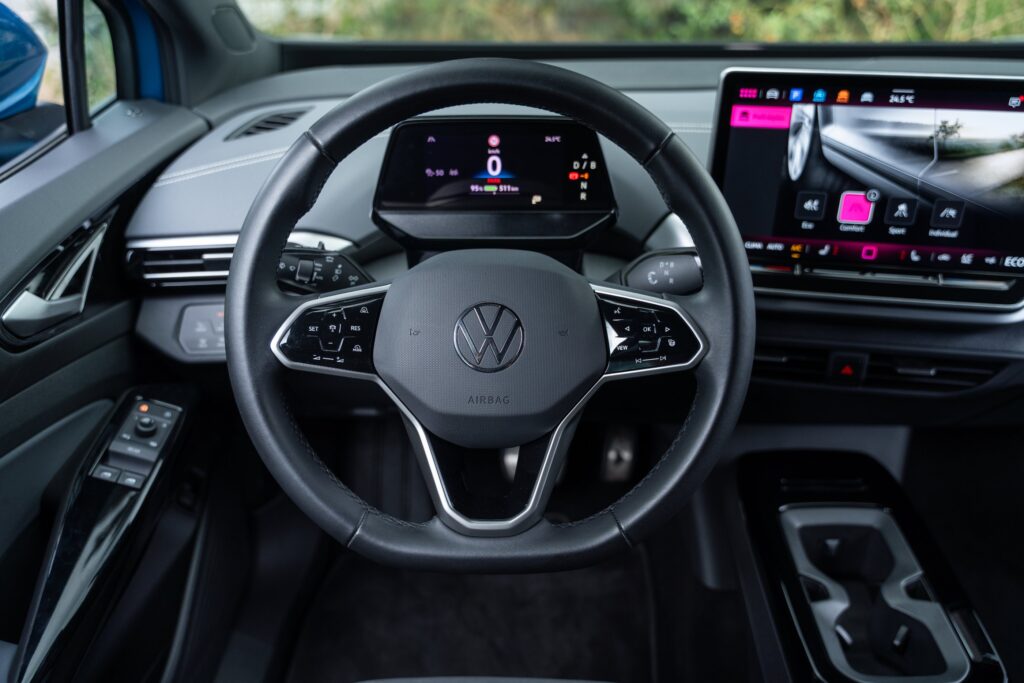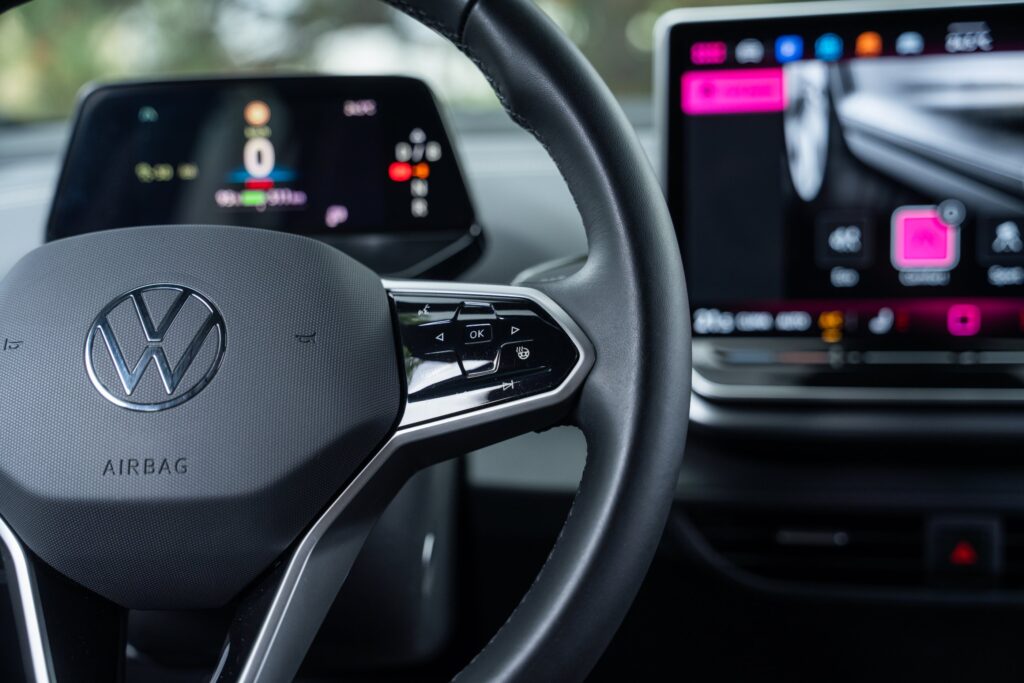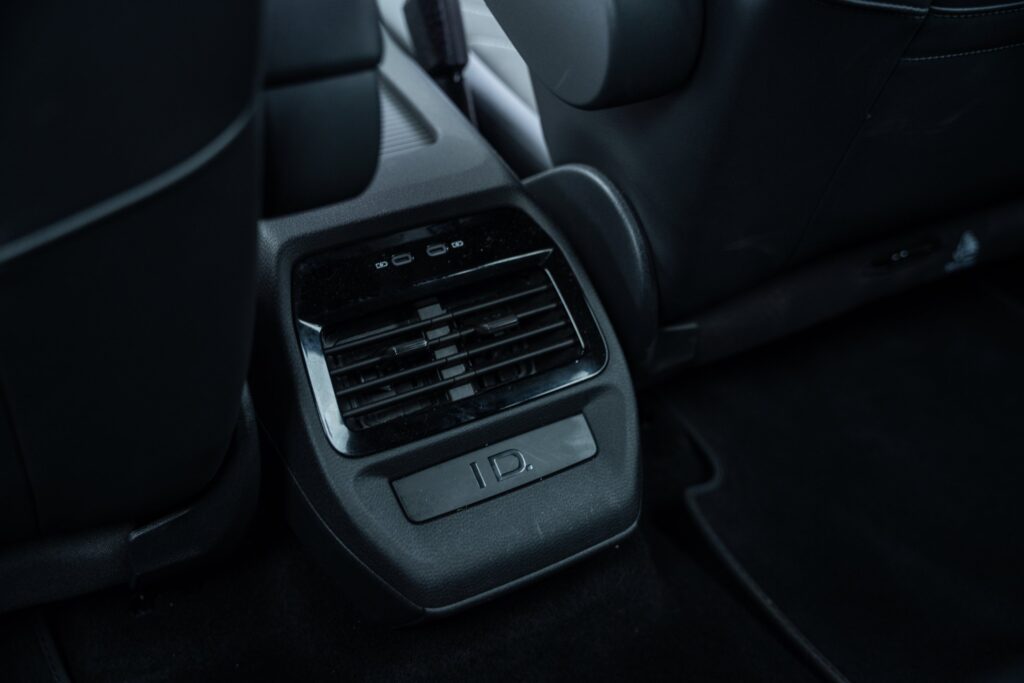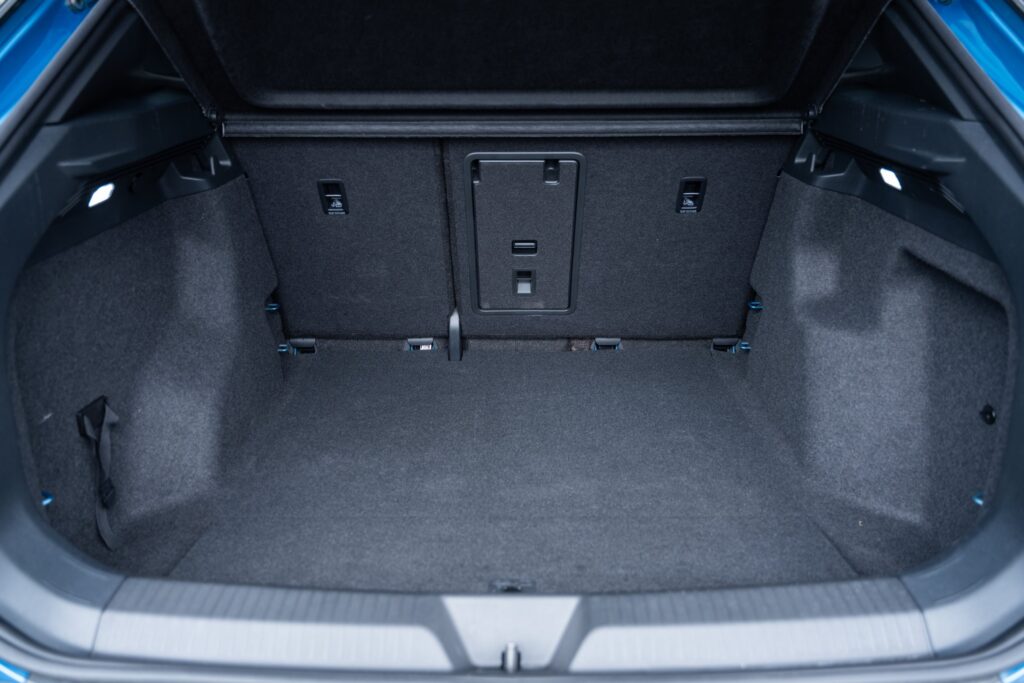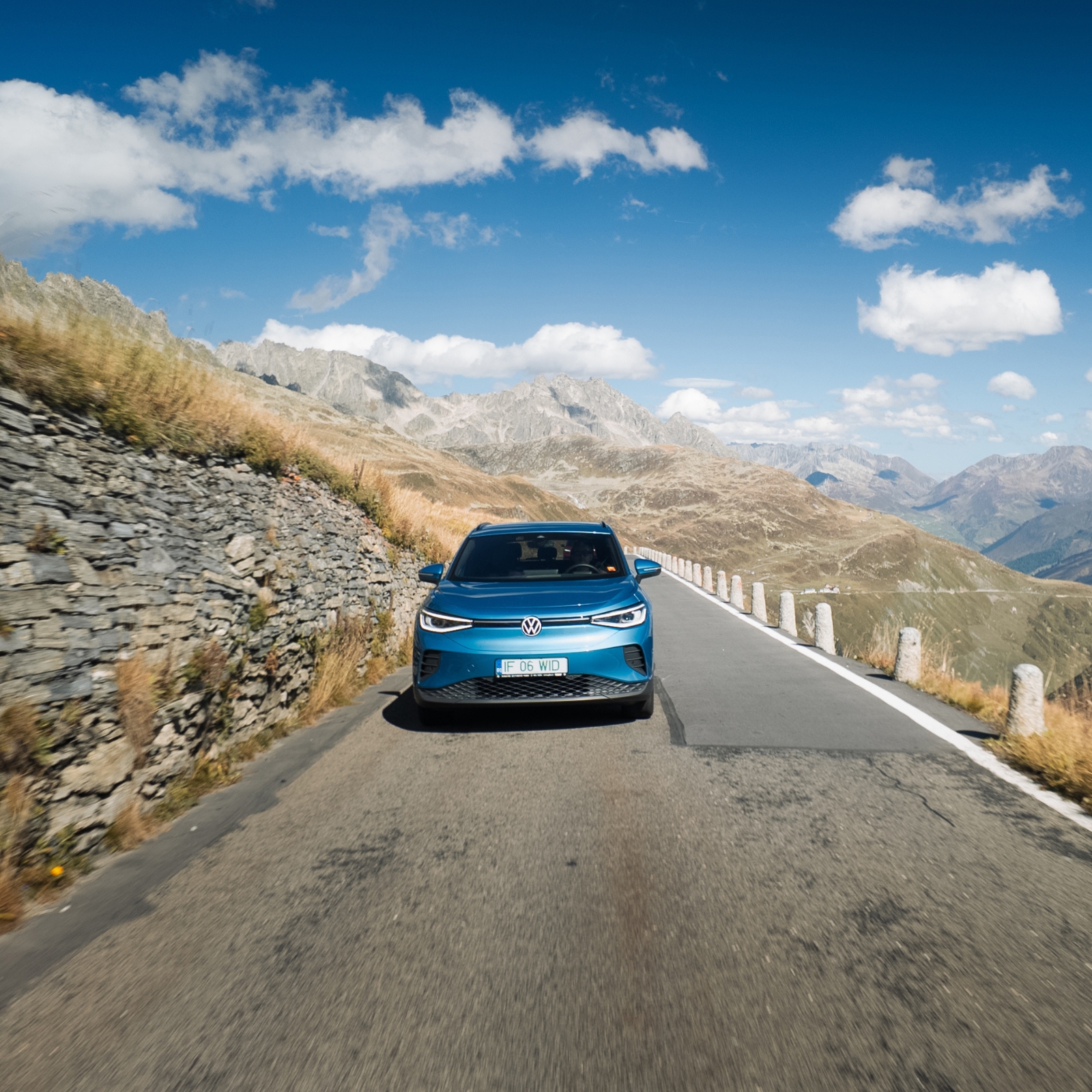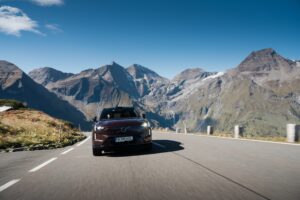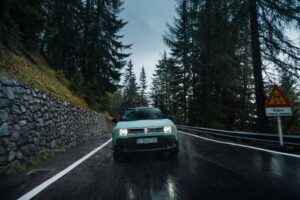Volkswagen’s ID.4 is one of the best-selling electric cars in Europe. Technical improvements introduced by the German carmaker for the SUV originally launched in 2020 help boost its popularity among customers.
The version we tested intensively through the Alps in EUROCHARGE by Schaeffler, the ID.4 was equipped with a 286-hp electric motor. The official WLTP range is 550 kilometers, achieved via a Li-Ion battery with a net capacity of 77 kWh that charges at up to 175 kW.
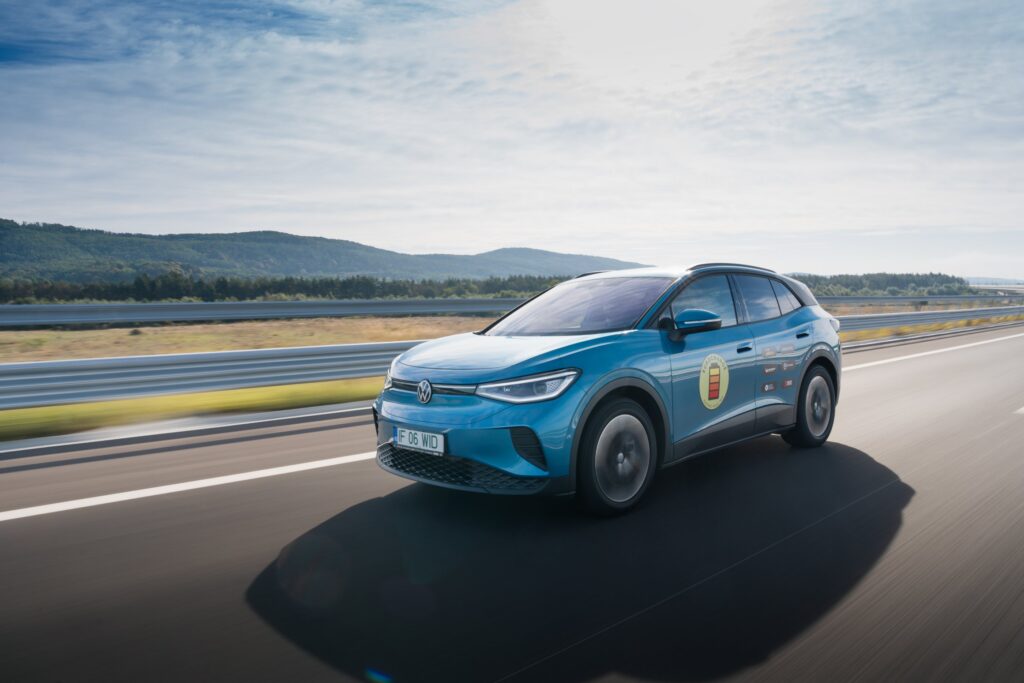
With such values, the Volkswagen ID.4 covered effortlessly the almost 5,000 kilometers of the road trip through the Alps. It has also achieved real range values close to the official figure while energy consumption was decent for its the market segment. We’ve compiled a set of infographics and hard data on range and consumption below.
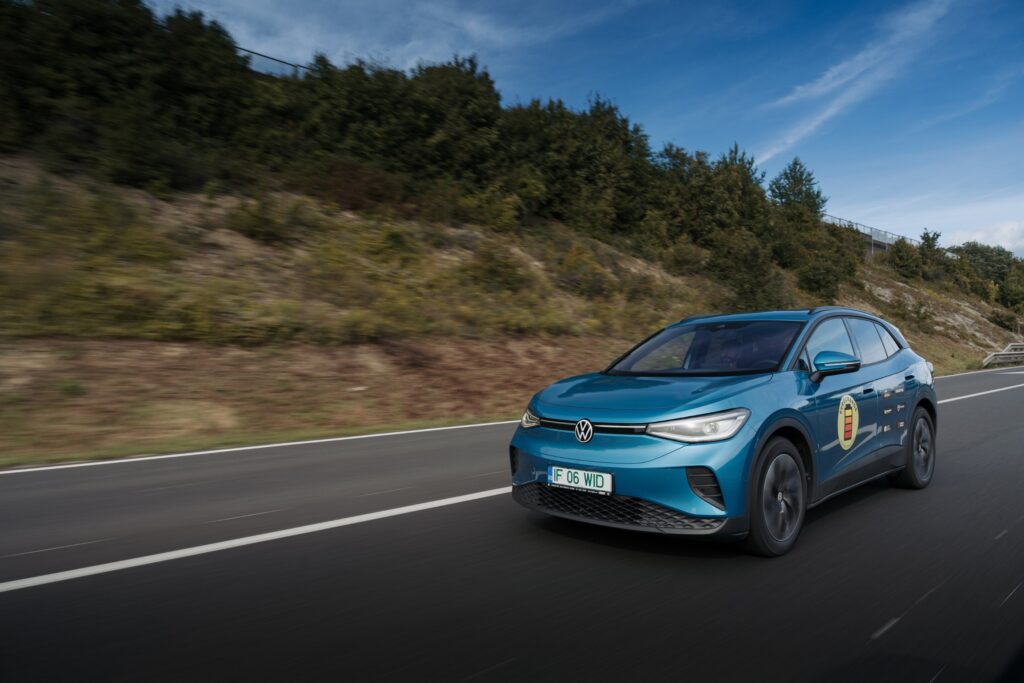
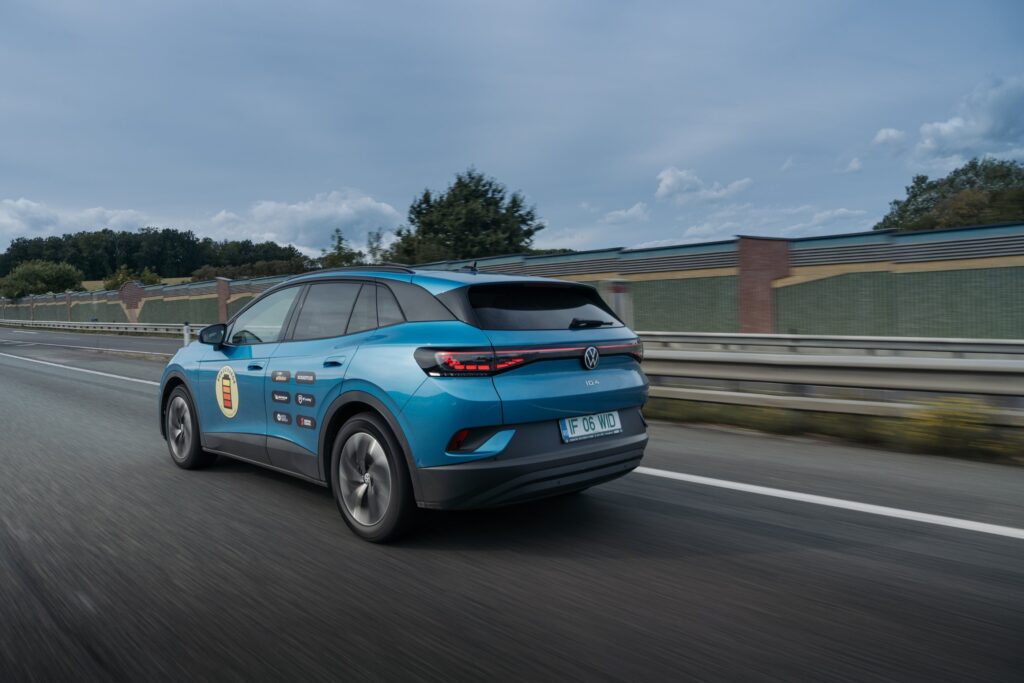
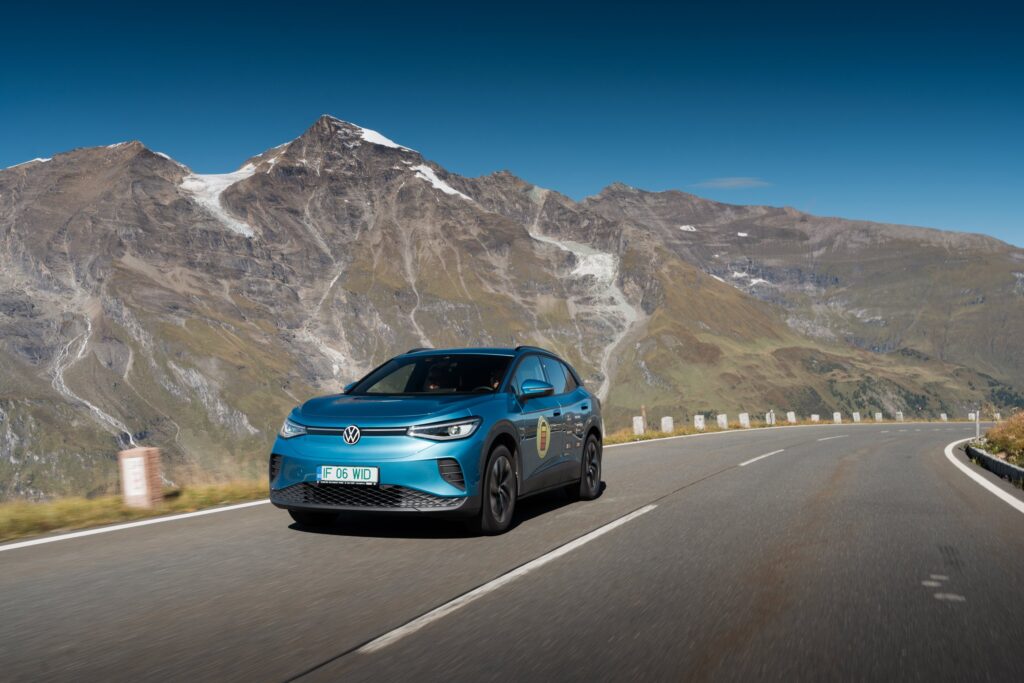
Volkswagen ID.4: daily infographics on consumption, real range, charging costs
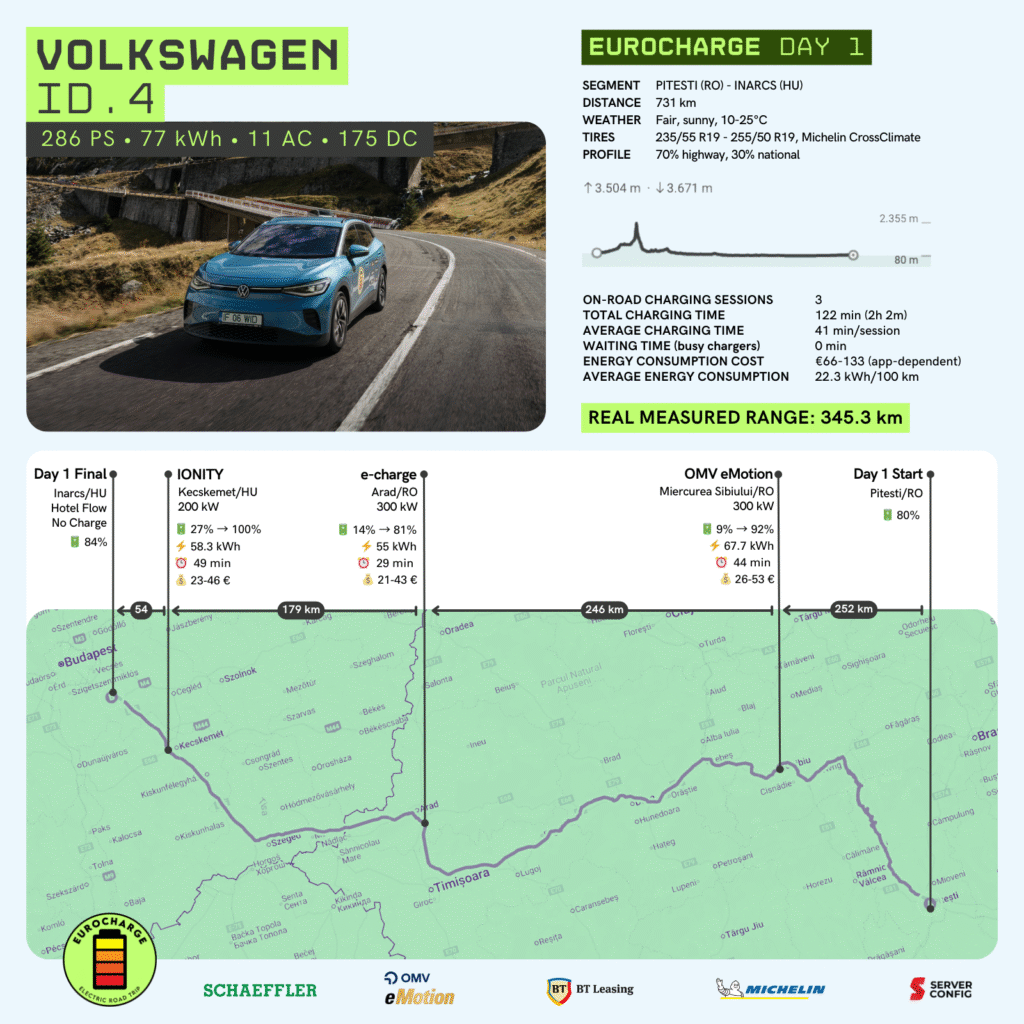
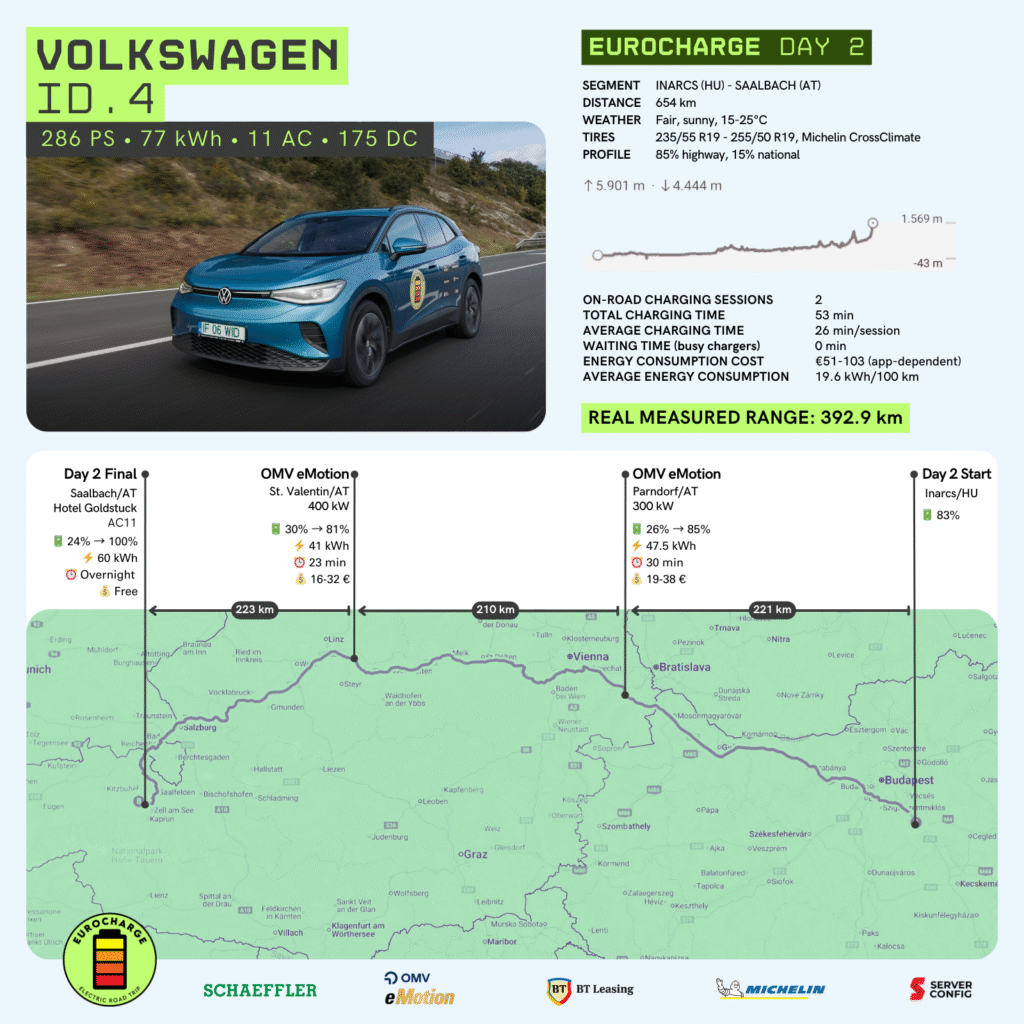
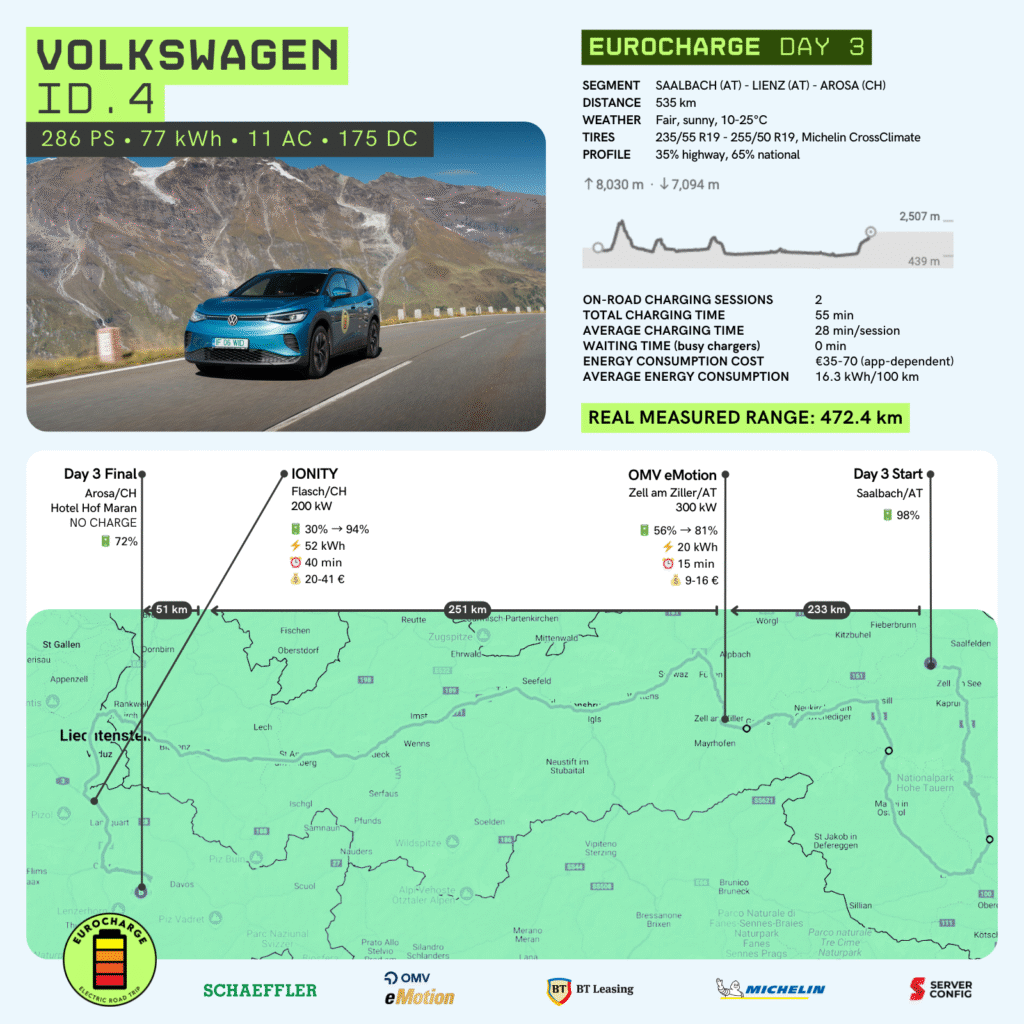
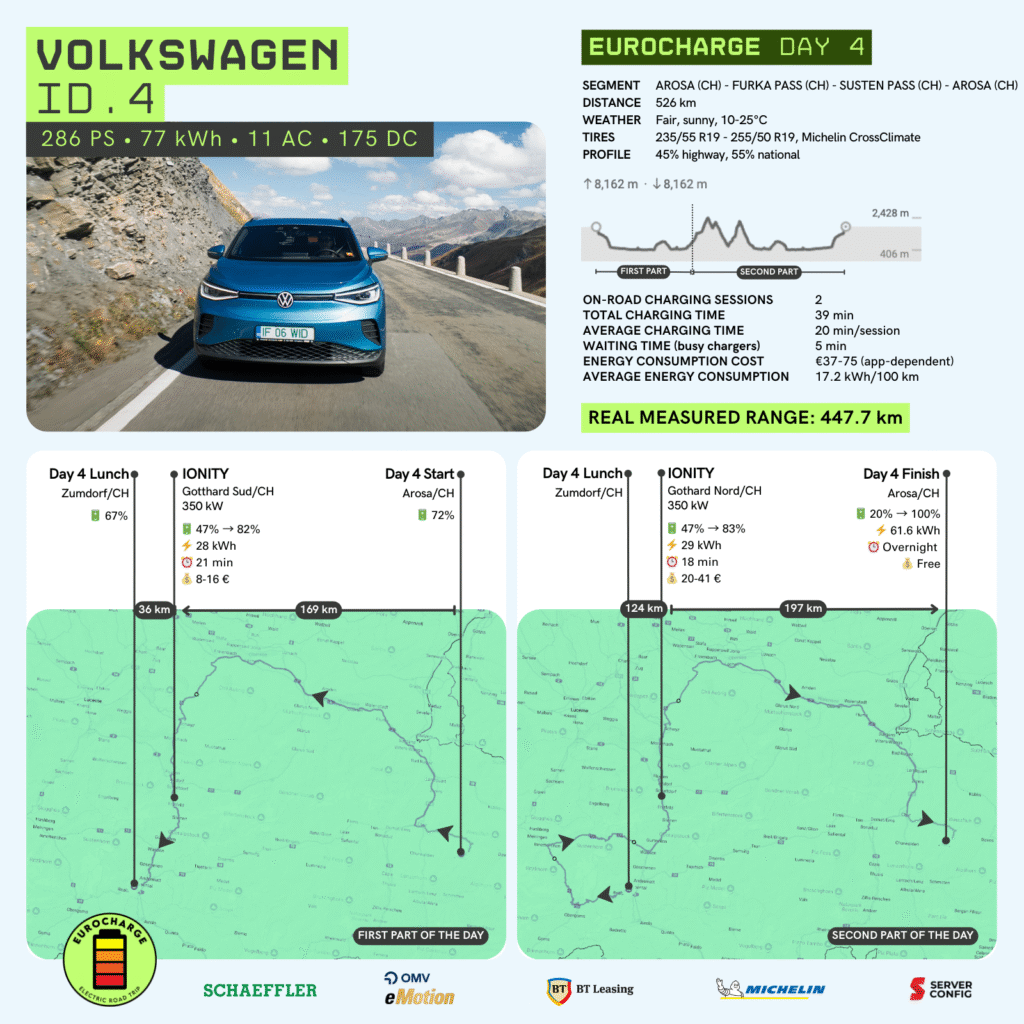
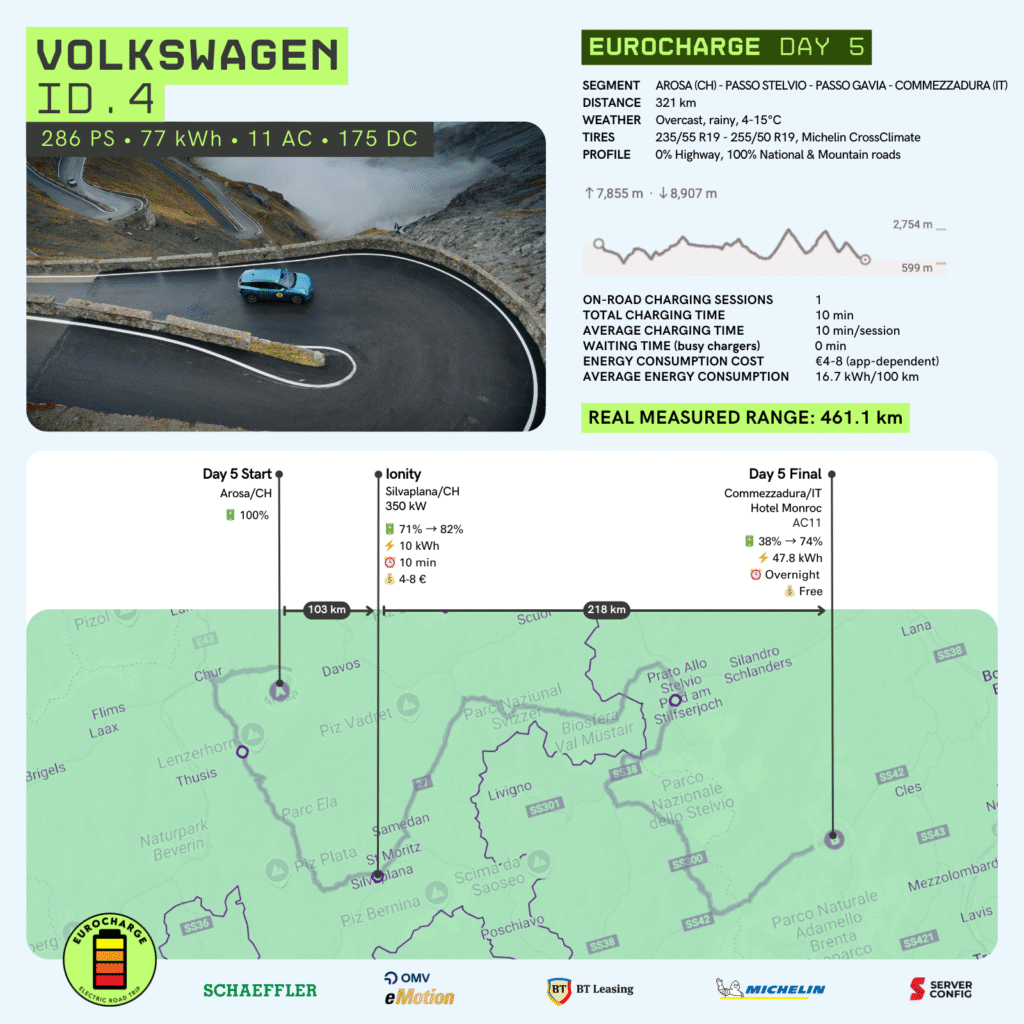
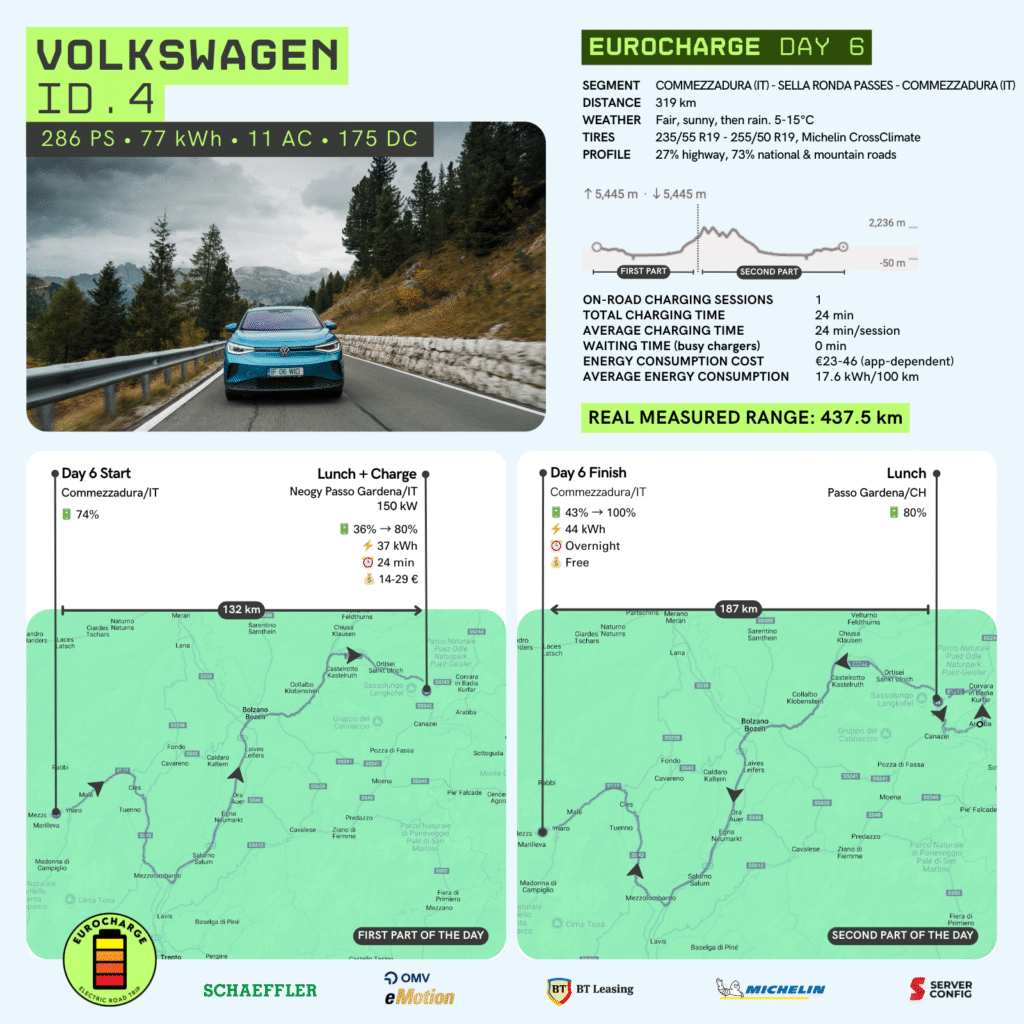
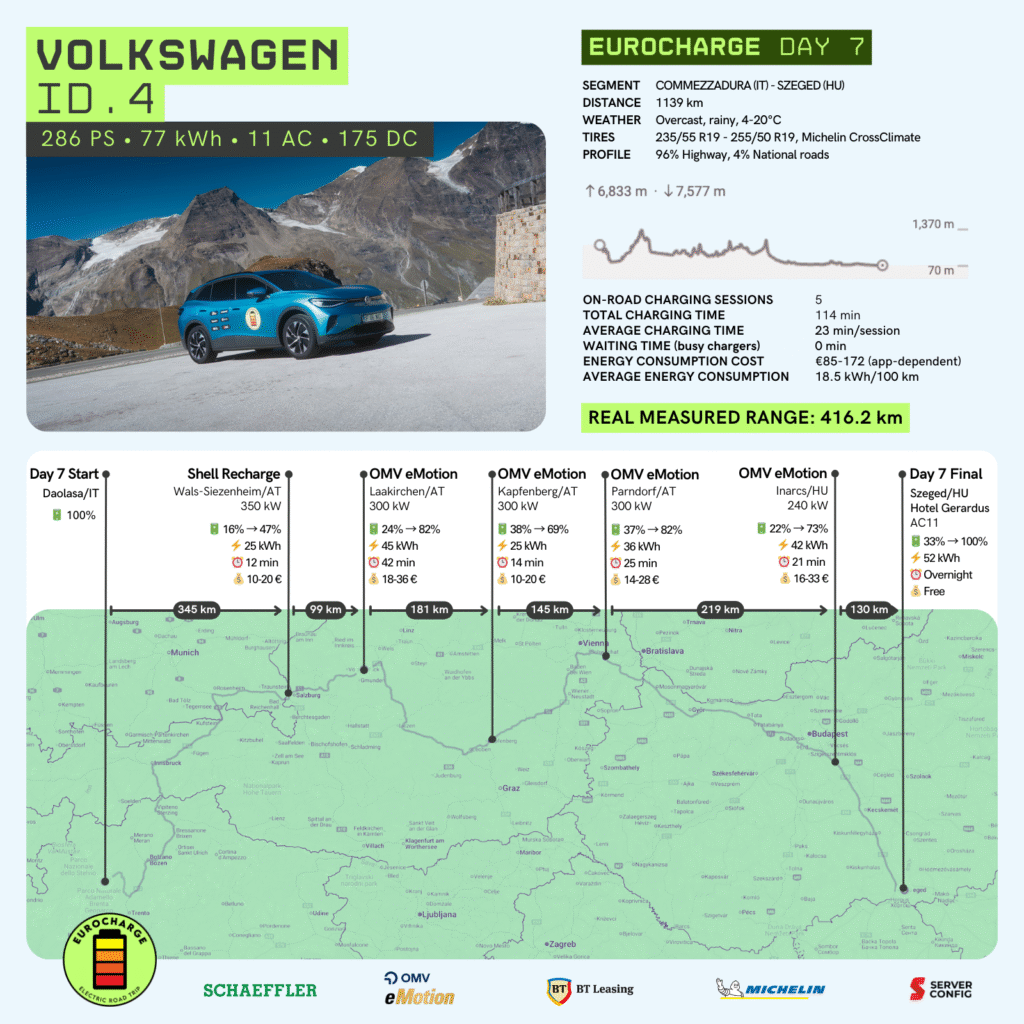
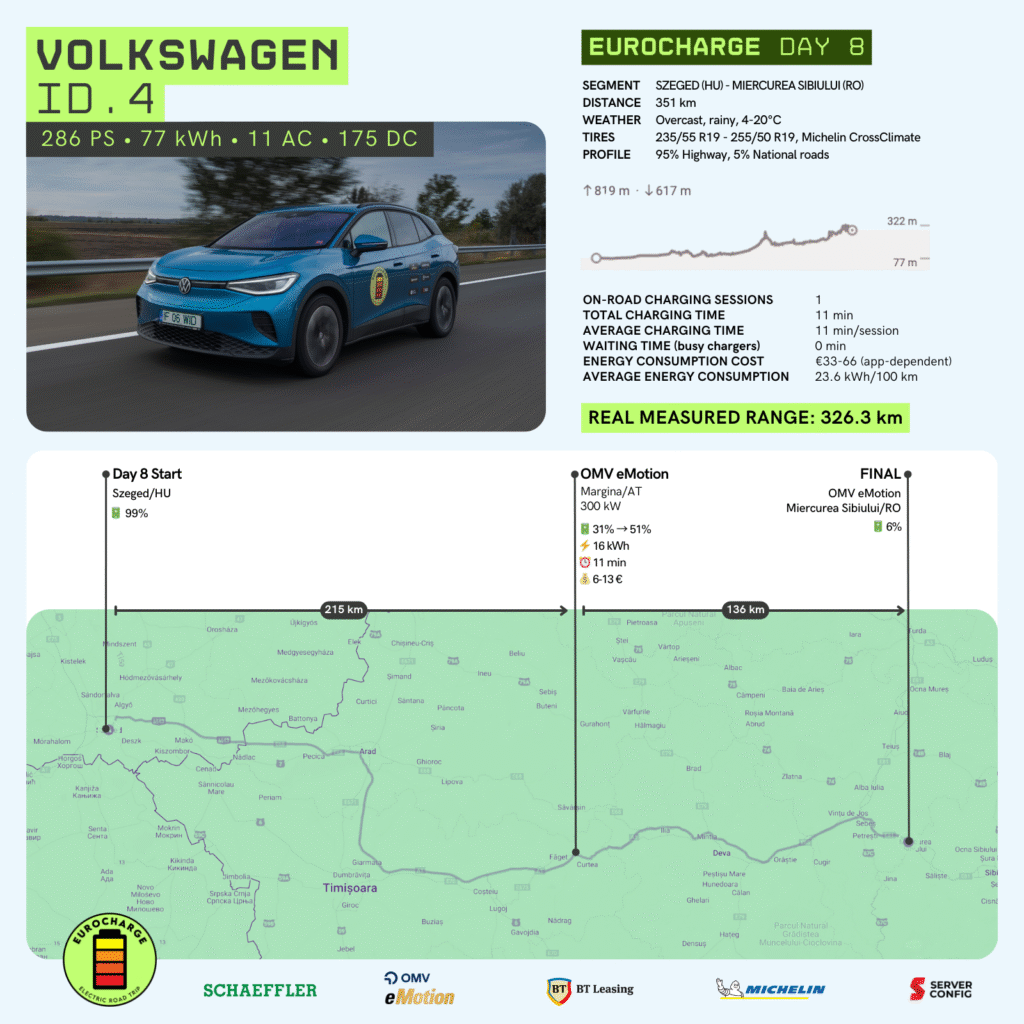
Volkswagen ID.4 by the numbers:
- Total distance traveled: 4576 km
- Total charging stops: 17 sessions on the road + 5 overnight charges at the hotel
- Total time spent while charging on the road: 7 hours and 8 minutes (428 minutes)
- Total energy charged: 943.9 kWh, of which 265 kWh in hotels
- Total cost of charges (hotel charges were free): between €264.8 and €536.3 (depending on the charging app used)
- Fuel cost comparison (estimated per route):
- A gasoline car of similar power (estimated average fuel consumption 9 liters/100 km, average price €1.8/liter) would have cost around €740.
- An equivalent diesel variant (estimated average fuel consumption 7 liters/100 km, average price €1.75/liter) would have cost around €560.
- Weighted average of the energy consumption over the whole route: 19.1 kWh/100 km
- Weighted real average range: 409.5 km
Important mention on the driving style: Throughout the entire test, the car was driven in “Normal” mode. It was driven steadily, within the speed limits, with an approach as close as possible to the legal speed limit on each road segment.
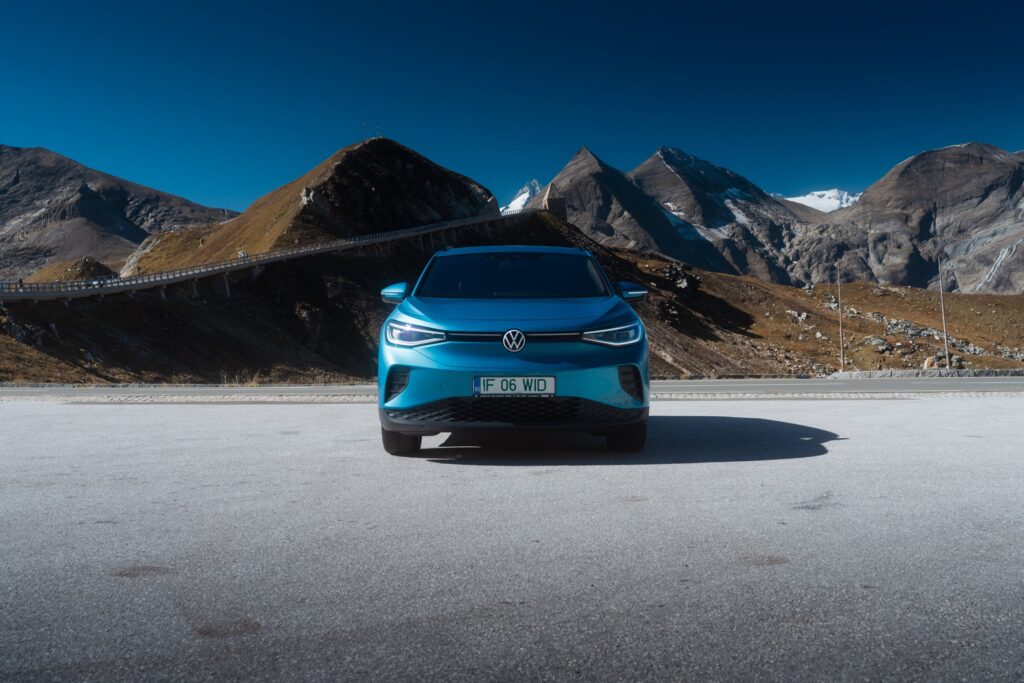
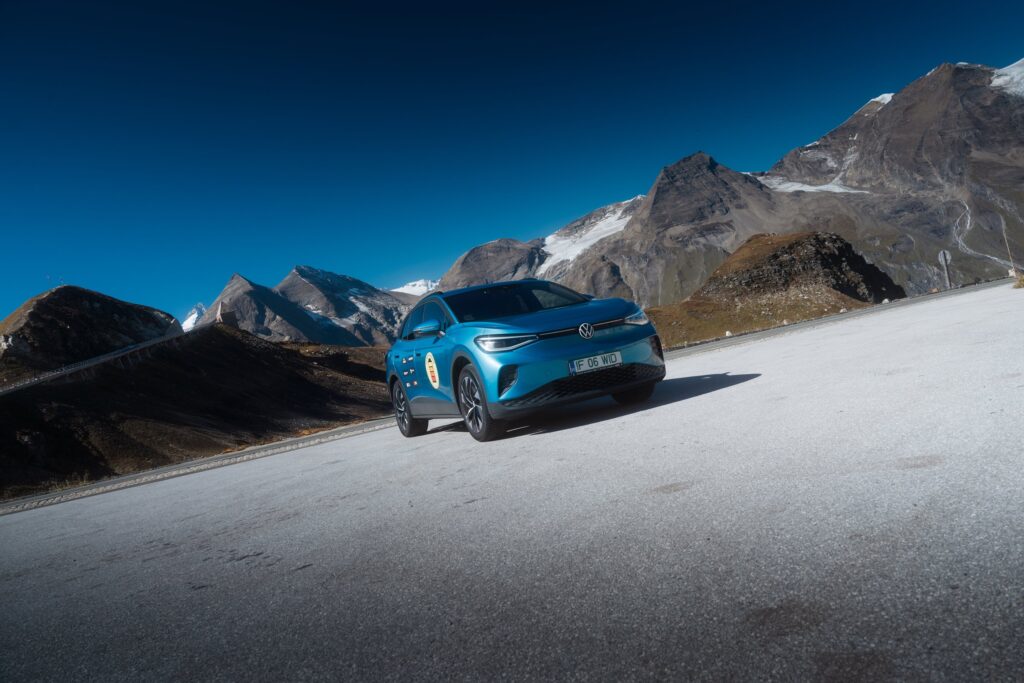
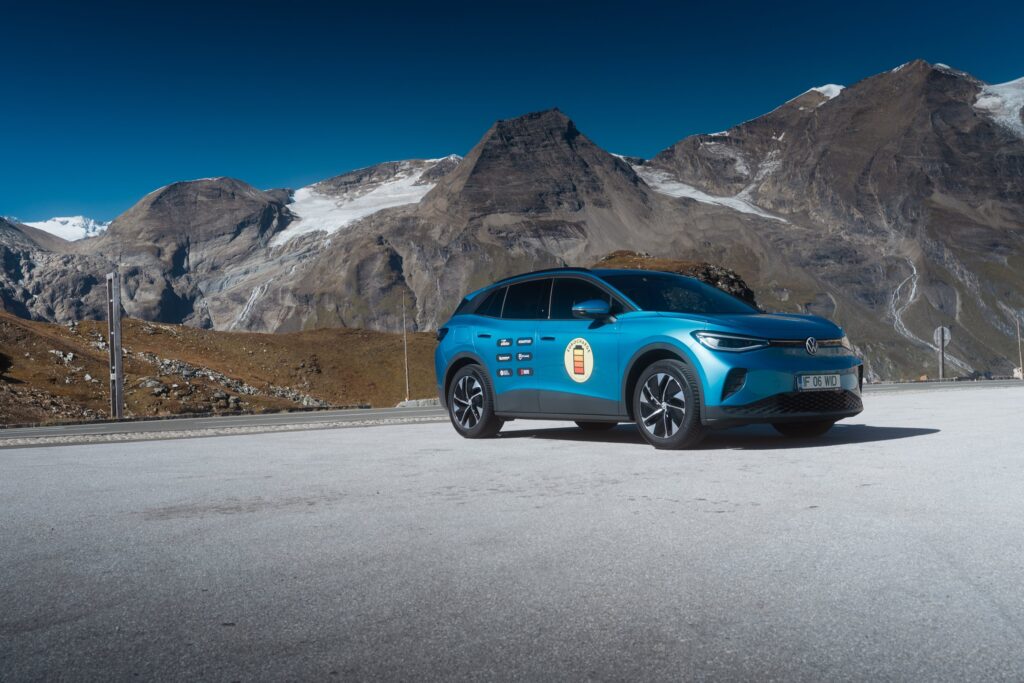
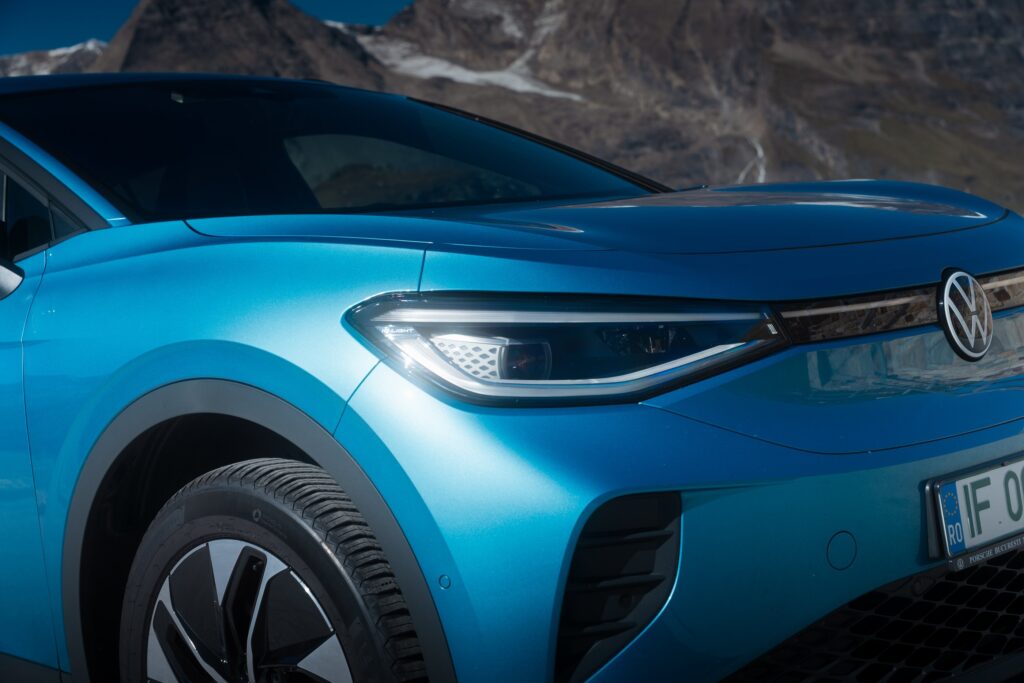
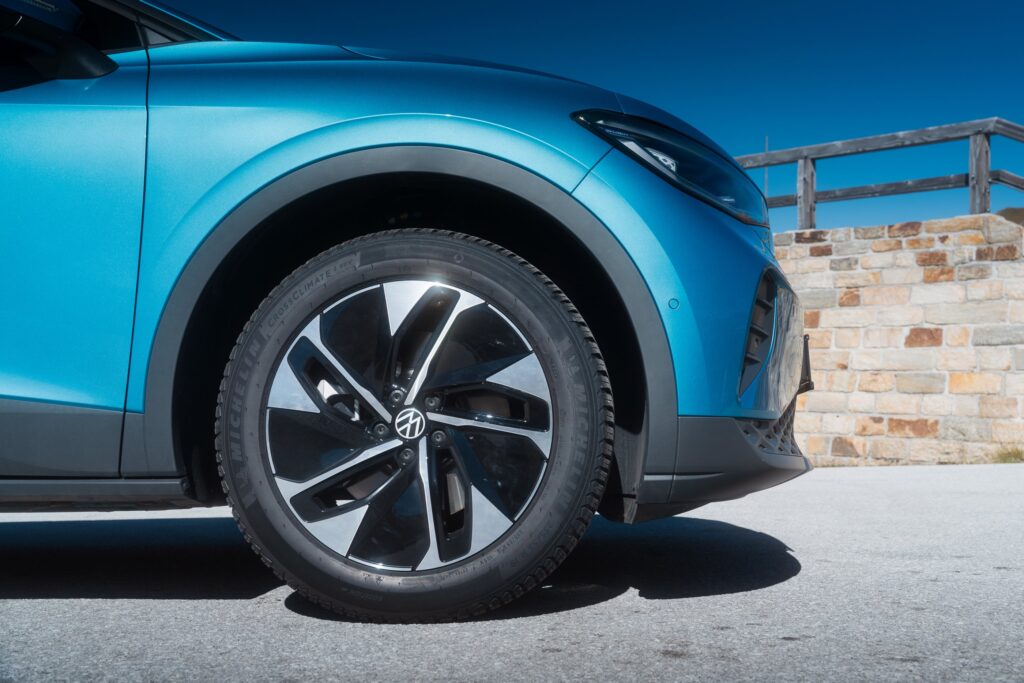
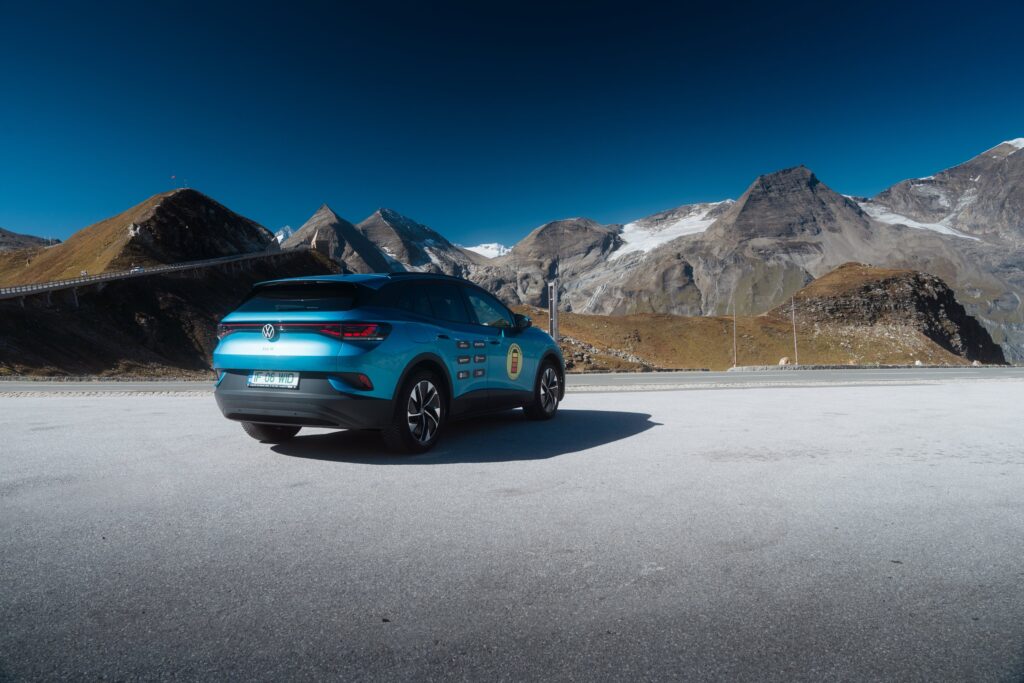
Conclusions and observations
- The champion of balance: The ID.4 proved to be an all-rounder. It didn’t excel in any single area, but it performed solidly and consistently throughout the tour, so it’s a balanced machine.
- Efficiency confirmed: With a weighted average consumption of 19.1 kWh/100 km, the ID.4 is an efficient family car. It proved again that trips through the mountains are the most efficient, with an average real-life consumption of 16.3 kWh/100 km in the Austrian Alps.
- Endurance-ready: Average real-life range was consistently in the 410 – 470 km interval on long days, so it offered predictability in terms of charging requirements, an essential factor on an long journey.
- Improved charging: The charging power of up to 175 kW had a positive impact, as it enabled quick and efficient stops, especially on the highway, where it managed to complete the longest day (1139 km) with charging stops of suitable duration.
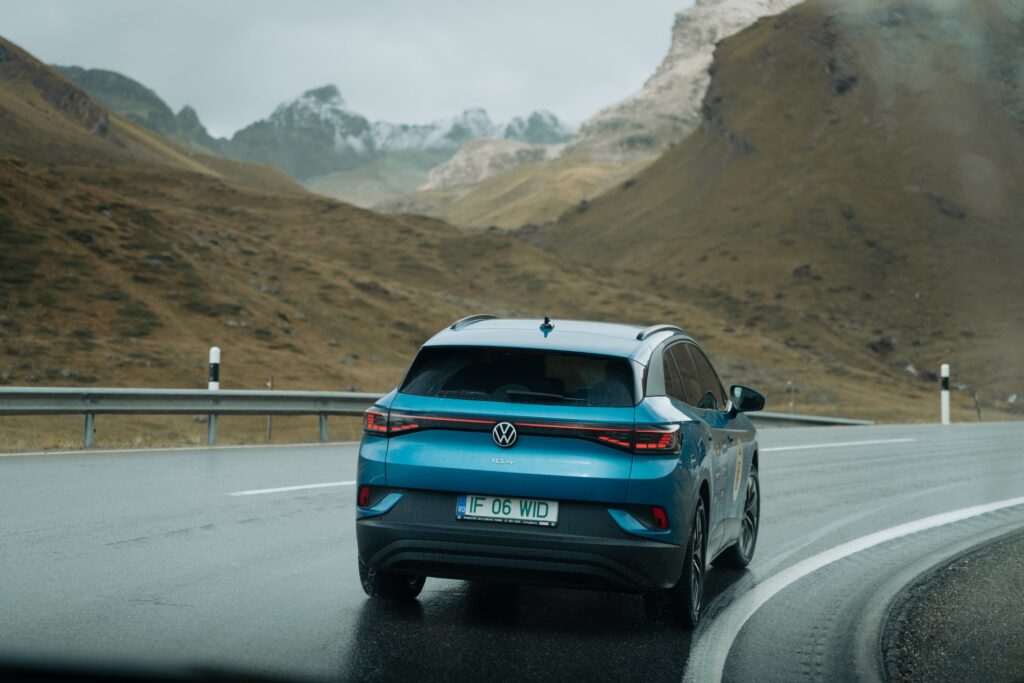
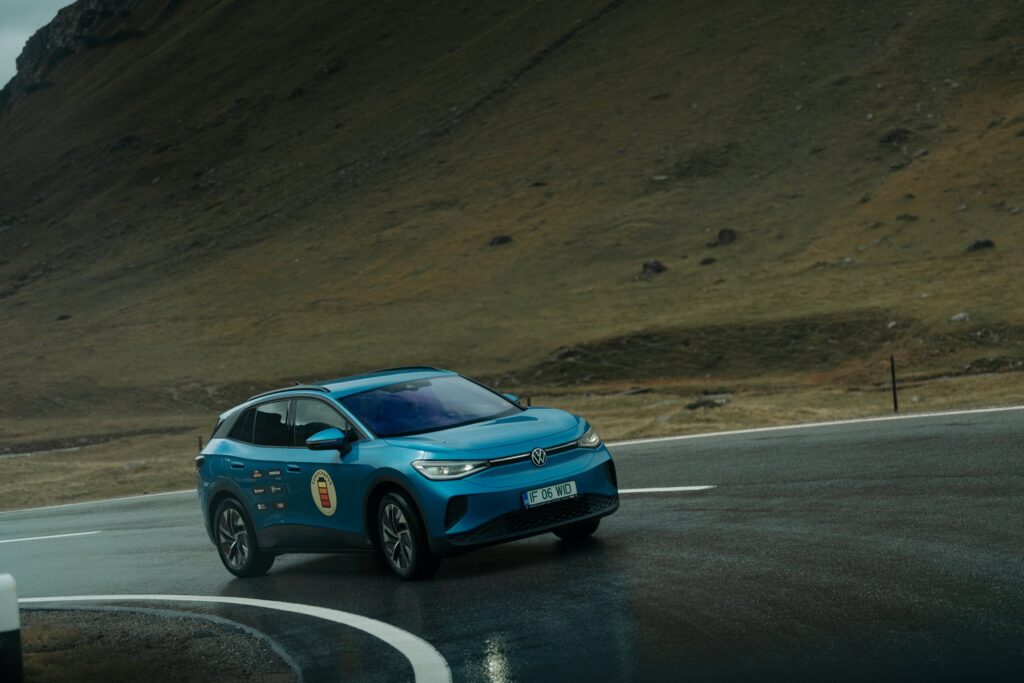
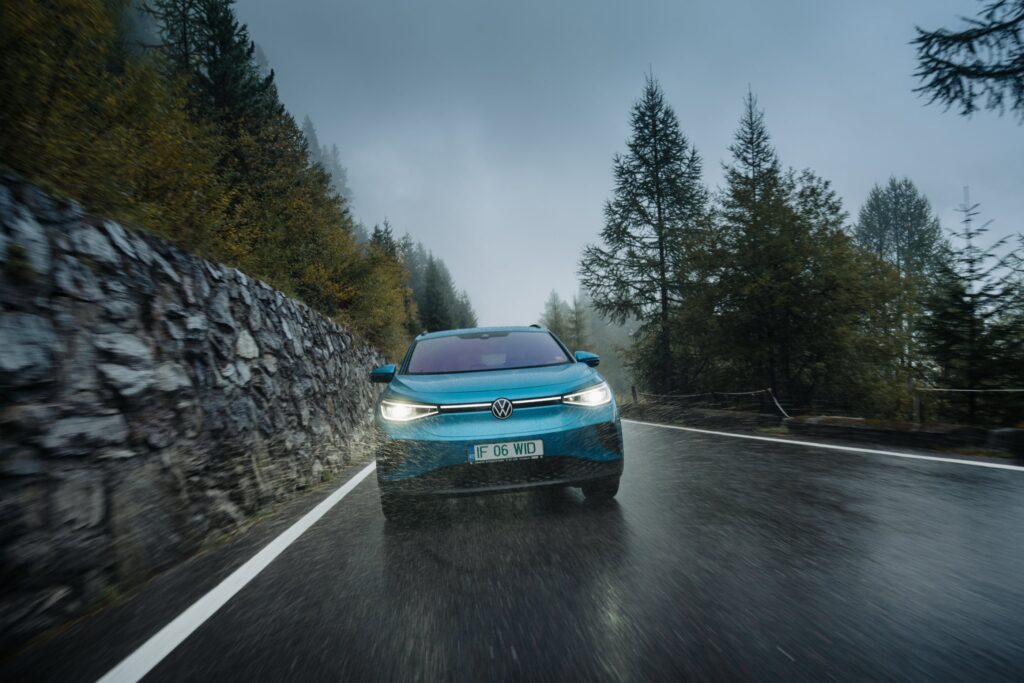
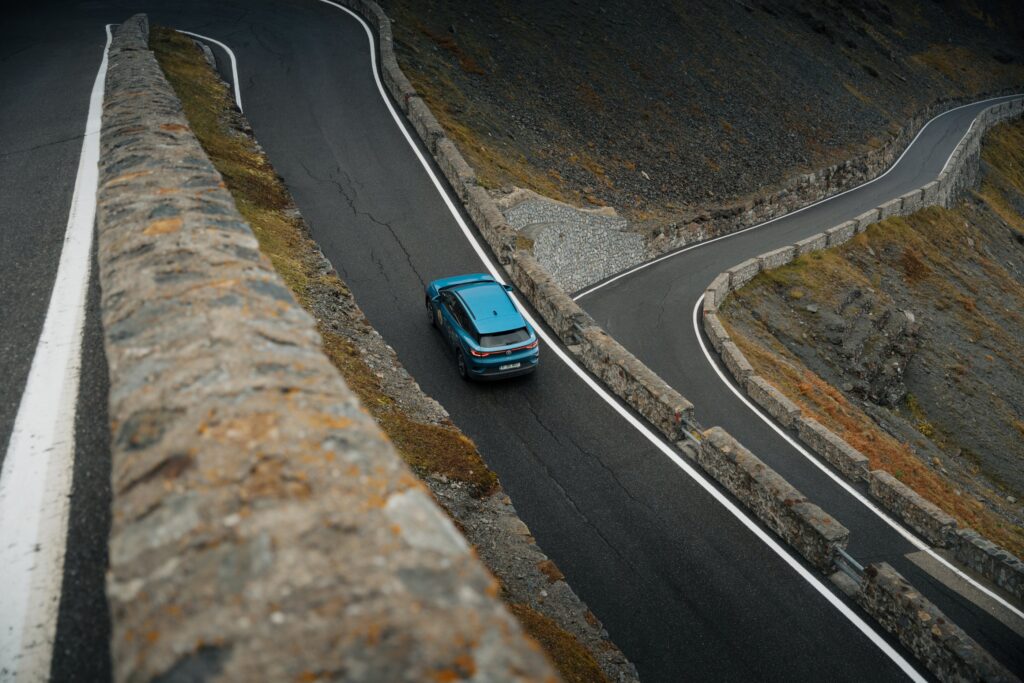
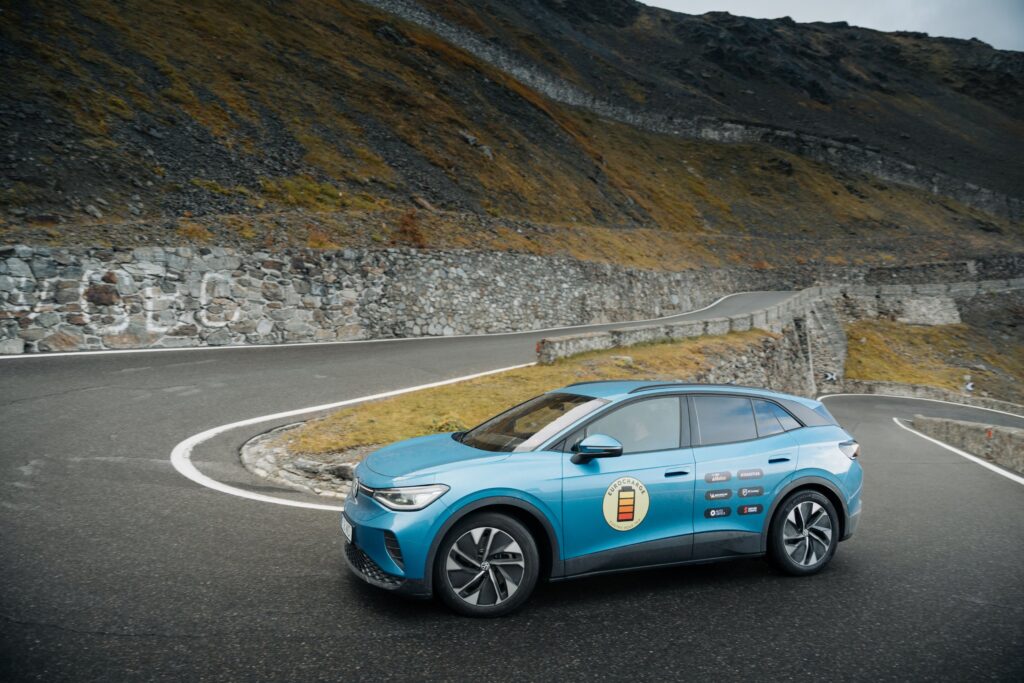
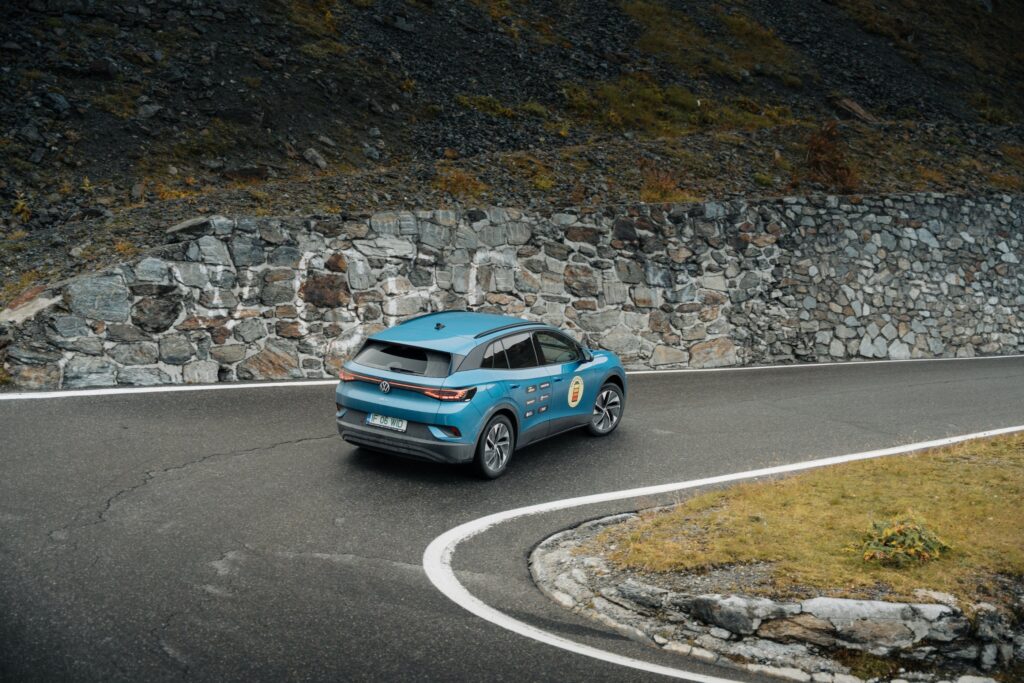
Impressions of those who drove the Volkswagen ID.4 in EUROCHARGE by Schaeffler
Gabi Nica (Cu și despre mașini)
Predictable and reliable. That’s how I’d characterize today’s drive aboard the Volkswagen ID.4. Volkswagen knows how to deliver exactly what customers expect. If you look at models like the Golf or Polo you immediately realize that what makes them adored by thousands of customers around the world is precisely the fact that they are predictable and don’t give you a hassle. They deliver exactly what they say they will.
They may not be the most exciting, dynamic or fun cars, but they are Teutonic in the purest sense of the word.
From Bucharest to Budapest, the ID.4 didn’t flinch, no matter what I put it through. It charged with a particular hunger every single time, was comfortable, refined and quite efficient (22.5 kWh/100 km was the average energy consumption). As I said: you can rely on it and the German seriousness that characterizes it.
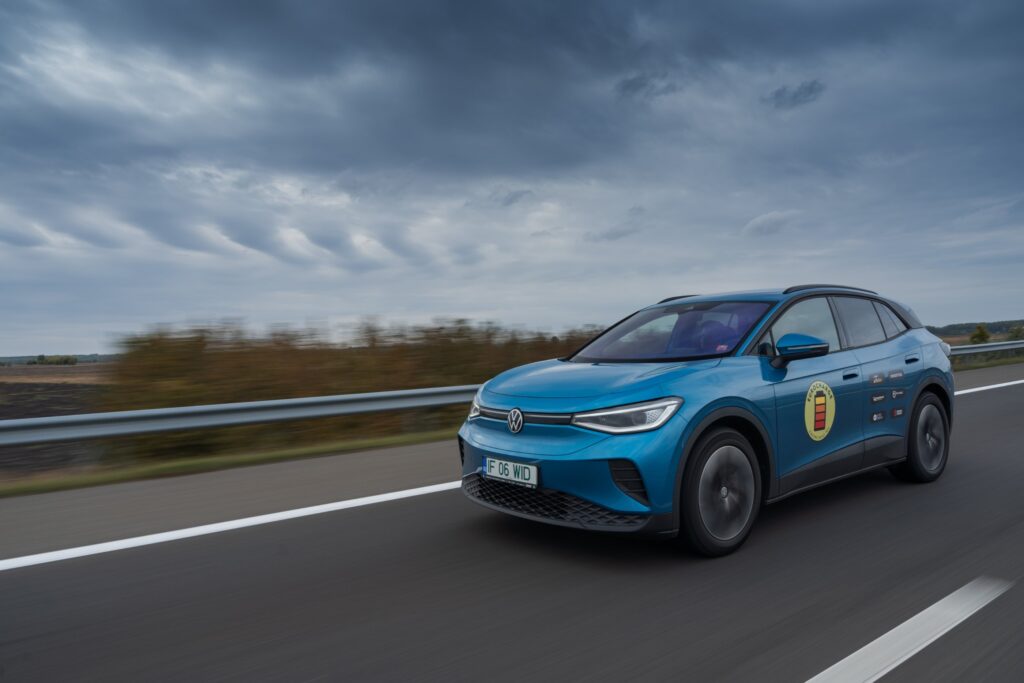
Cornel Șocariciu (Autocritica)
We’ve crossed paths a couple times now. Sometimes on shorter distances, sometimes on long and very long journeys. And even though it now comes in a technically upgraded version, the Volkswagen ID.4 is still the same reliable road companion. Simply put: it’s dependable.
Because that’s what ID.4 is. Dependable, trustwortky. No, I don’t think it excels in any major department, but it doesn’t struggle, either. It’s an all-rounder – a word coined specifically for cars coming out of Wolfsburg.
With this update coming in 2025, I found the ID.4 a bit more efficient. Even if it rides on a slightly outdated technical configuration (let’s be honest and admit that in the last four years there have been significant advances in the volume electric segment), the German crossover performs its duties with honor. The load curve is not to be neglected (you’ll see it in the infographic at the end), the range is not bad either, and the efficiency (aka energy consumption) was within good limits in the conditions we encountered today on the road (a highway in Hungary full of roadworks and 80 km/h speed limits plus similar situations in Austria).
Space, trunk volume, responsiveness, steering, regenerative braking and the infotainment system are all topics that the ID.4 passes with flying colors. Yes, I kind of wish I had the steering wheel with buttons instead of touch controls, I kind of wish I could see those dual controls for opening the windows disappear (today I fanned the back seats every time I wanted to open my window without rolling my eyes over the controls), and I kind of remembered that I like a classic armrest better. But those are minor quirks you can overlook or get used to.
I wouldn’t complain about the suspension, especially since the rear axle had to put up with quite a bit (two large bags, a cabin trolley, three backpacks, and some video equipment strapped through the trunk). On the other hand, the noise at highway speeds could be a few decibels softer.
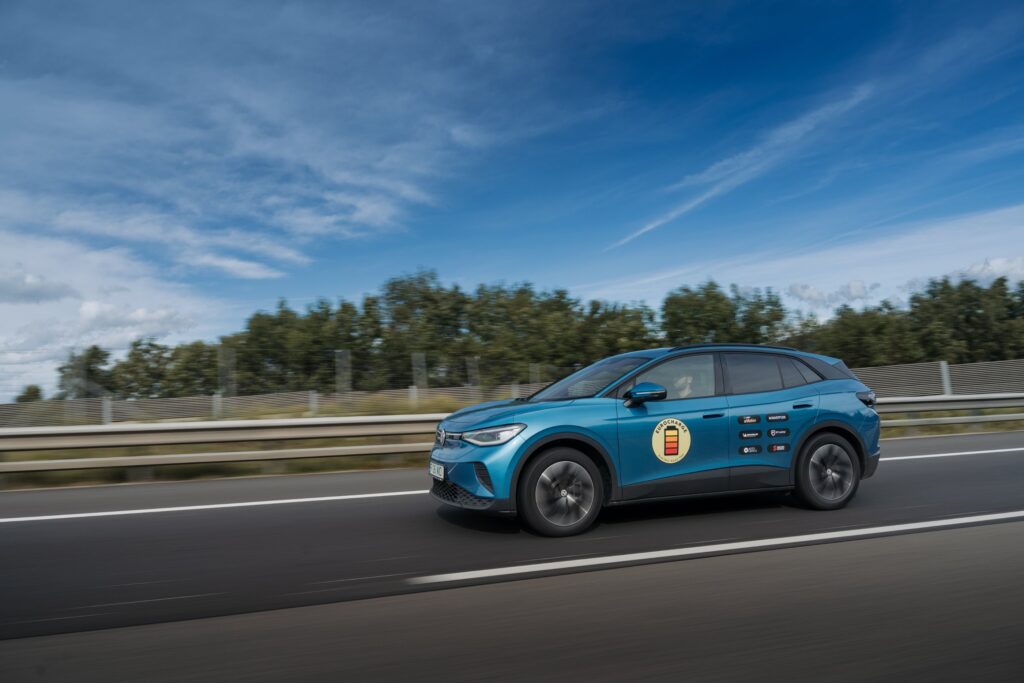
Marco Badea (Explicativ.com)
It was love at first sight between me and the Volkswagen ID.4 Pro, just like in the movies. I admired it discreetly on the first two days of the tour, and on the third, when I got behind the wheel, it greeted me with the elegance of a well-built electric car.
The Volkswagen ID.4 Pro is extremely smooth on the road and you don’t feel it shake you hard even on the bumpiest bumps in the road, a sign that the suspension is on the right track.
Everything inside is designed to make your driving experience (and beyond) as efficient and enjoyable as possible.
The navigation screen is positioned so that you don’t feel like it’s obscuring the windshield, and it’s also angled slightly towards the driver so you can get a very good view with just your eyes. Plus, it’s positioned at the optimal distance so you don’t accidentally touch it if you hit the gear lever. Behind the wheel, you feel like you’re in a real SUV, as the car feels both sturdy and nimble on the road at the same time.
It’s spacious, the separate armrests on the front seats help you drive very relaxed, and the whole dashboard construction is neither garish nor shabby, lacking in personality. It’s a tasteful minimalism that draws you in.
The exterior exudes strength. It’s like one of those quality jackets that you put on both because it gives you confidence through its beauty, but also because it keeps you warm in cold temperatures.
The Volkswagen ID.4 Pro has personality, and every touch of the accelerator or brake is so well thought out that you feel at one with the car. German fusion.
As for energy consumption, what can I say: range is great. It’s an extremely good car for the city and excellent on long trips. I have driven it for 200 km, mostly on the Grossglockner Hochalpenstrasse, and I have seen how well the fuel consumption adapts to the road conditions.
This car is not rigid in any way. And when you see it on the road, if you haven’t driven it yet, you’ll feel it wink at you.
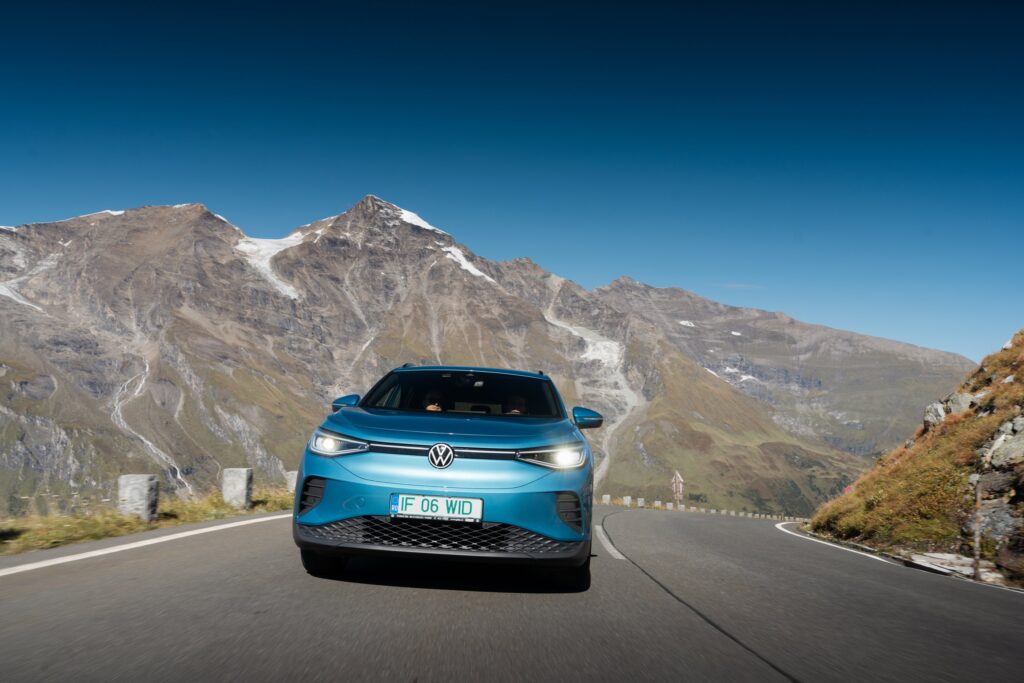
Mircea Meșter (Autocritica)
The Volkswagen ID.4 has always been the well-behaved choice among compact electric family cars. The ultimate family car that doesn’t upset anyone in the neighborhood, but doesn’t give you butterflies in your stomach either. Proper food, no chili peppers. A sensible choice.
Except, in the meantime, ID.4 has been hitting the gym. It’s been secretly working out and, while it looks the same (unless you have a trained eye for minor details), under the bodywork it’s transformed from a family man into an athlete. It’s a facelift of sorts, but not with chrome bling, but with muscle and brains. The engine on the Pro version, the one on our tour, has jumped from 204 to 286 horsepower, and torque has exploded to 545 Nm. That means the sprint to 100 km/h dropped to 6.7 seconds and top speed climbed to 180 km/h. Charging got a serious boost too, rising to 175 kW, which means you spend less time at the plug and more on the road. And on the inside, the Germans listened and put in a bigger 12.9-inch center screen, moved the gear selector to the steering column, freeing up space.
I got to see and feel him at work on the most complex day so far of our electric tour: a trio of Austrian Alpine passes – Grossglockner, Felbertauern and Gerlos.
The result is excellent. After 230 kilometers of ups and downs on the three passes, the car was ridiculously efficient: 13.3 kWh/100 km. At a posted average speed of 48 km/h, I had 54% left in the battery. To put it in Romanian, I could have taken the whole route in reverse and still had some electricity left for a one-way trip to the village grocery store. Impressive.
The highway to Switzerland followed, with 120 km/h limits. Fuel consumption went up, naturally, but stabilized at a very good 14.7 kWh/100 km after 400 km. And finally the desert: the 25 km climb from Chur in Switzerland to Arosa.
I would like to use this text to talk a bit about the German engineers’ fetish: touch buttons. My relationship with them has evolved. For the first hour, I hated them. In the second, I began to understand their logic. By the end of the day, my finger was sliding the volume slider under the screen like I was Richard Clayderman at the piano. It became my favorite gesture, the way I controlled the most used system on board: the audio.
Now for the most important part. We charged twice today: once for 15 minutes and once for 40. But the truth is that the second stop was out of empathy, to leave the hotel stations overnight for colleagues who needed them – you know, when you organize this dementia, you sacrifice for the good of the community. But it’s certain that if I’d been alone or with my folks, this whole hellish day of three alpine passes and an aggressive climb would have been done in a single 15-minute charge. That’s it.
The ID.4 remains an all-rounder which, after this technological facelift, has become excellent. An extremely serious family car that’s left with very few minuses. It’s arguably one of the smartest and most honest options you have in its price range.
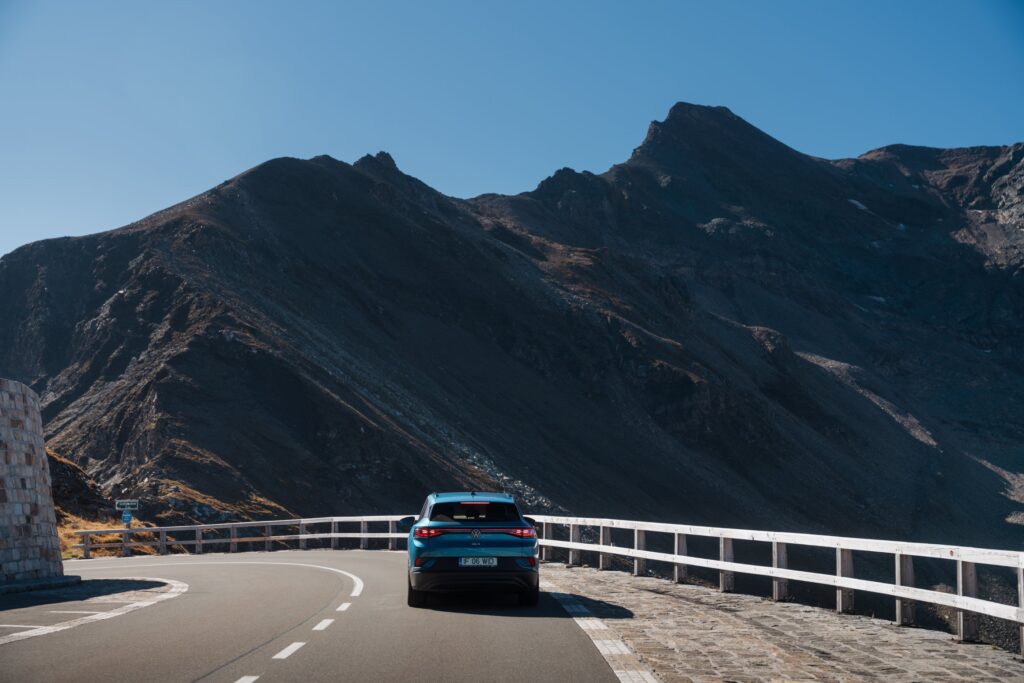
Constantin Ciobanu (Autocritica, Adevărul)
Volkswagen ID.4 is to me a dish that you once tasted, liked, but the chef hadn’t found that fine balance of ingredients to make it memorable. But here I am with that dish again, did the chef learn anything from the feedback from the dining room?
Absolutely yes! The massive plus, or I wouldn’t exactly call it an evolution because things are totally different, is in the chassis, the way the ESP system is calibrated and how energy is converted into dynamic performance.
Although with an obvious SUV allure, the suspension achieves a very good mix of comfort and effective roll and mass control. Moving on to the 286 hp and 545 Nm, I’d say things are radically different to what I initially found with this model when it was launched. You have access to unrestricted power from the ground up, initially this was done gradually, somewhere around 70 km/h you felt like you were getting all the horsepower you bought. So, yes, the 286 hp is there from the first few inches an hour. The car is infinitely more efficient in sending the power to the ground, here the Michelin CrossClimate tires probably have something to say. But an extremely interesting detail, the rear axle is so efficient at putting the power down that if you accelerate violently out of corners you’re met with a little understeer caused by a violent transfer of mass to the rear, it’s like a dragster at the start. And the ESP is much more refined and fluid in its intervention.
The technical update received by the ID.4 would have been worth a little more if it had been accompanied by the elimination of ergonomic shortcomings such as the two buttons that control the opening of the front/rear side windows after selecting the area of interest. The infotainment system wins with the new center display that has a new operating system behind it, but I still ran into minor syncing syncing hiccups on Apple CarPlay.
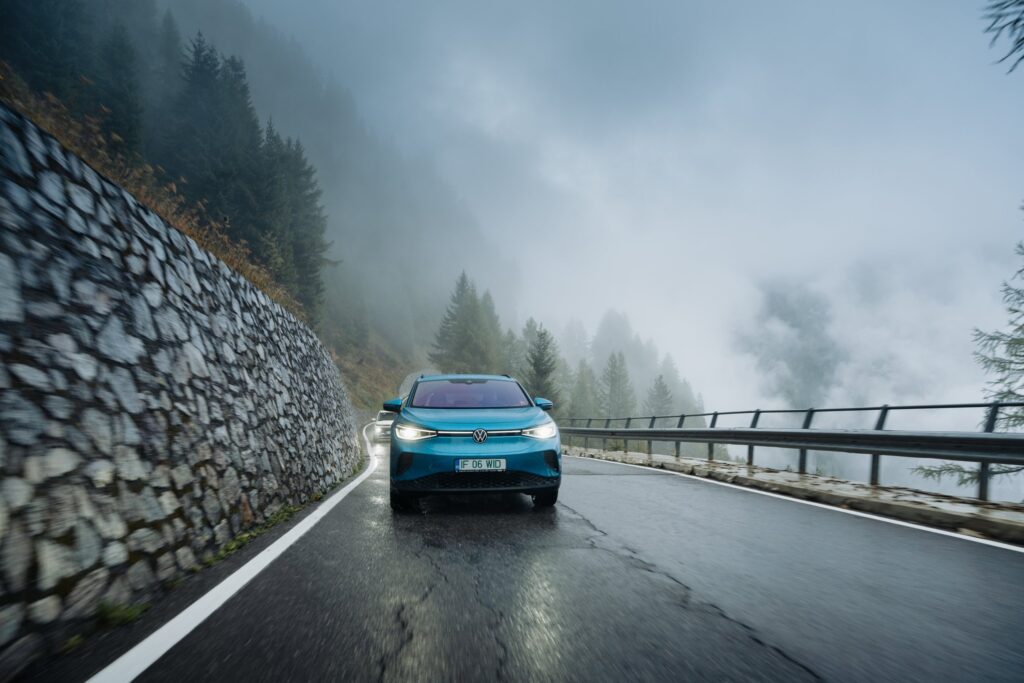
Dragoș Băltățeanu (Autocritica, Auto Test)
I have known the Volkswagen ID.4 well for some time. I knew it was a car that you could rely on at any time, very easy to drive and that gets under your skin slowly, mile after mile. To many, the ID.4 may seem a dull electric car, to me it’s one of the best.
And now, on the road from Switzerland to Italy via the Stelvio Pass, we’ve had a look at the technologically facelifted version of the German model. Visually, from the outside, it’s identical to what we knew from the standard model. Get behind the wheel and you find the same great driving position, the same spacious interior full of storage compartments, but also those few mistakes Volkswagen has made and is going to fix: the tactile “rear” button for operating the rear windows that you accidentally press all the time, the touch buttons on the steering wheel and the famous sliders for audio volume and temperature, but now easier to control.
The interface is just as friendly and easy to use. You get behind the wheel, put your foot on the brake pedal and you’re ready to go. You immediately notice the larger 12.9-inch center screen and a new, more intuitive and user-friendly infotainment system. Rear axle electric motor power has increased to 286 hp and torque is now 545 Nm. The battery is 77 kWh, and it charges quickly and is more efficient. Today we drove up and down the Julier, Stelvio and Gavia passes in rain and bad weather. Average consumption indicated by the on-board computer: 16.7 kWh/100 km.
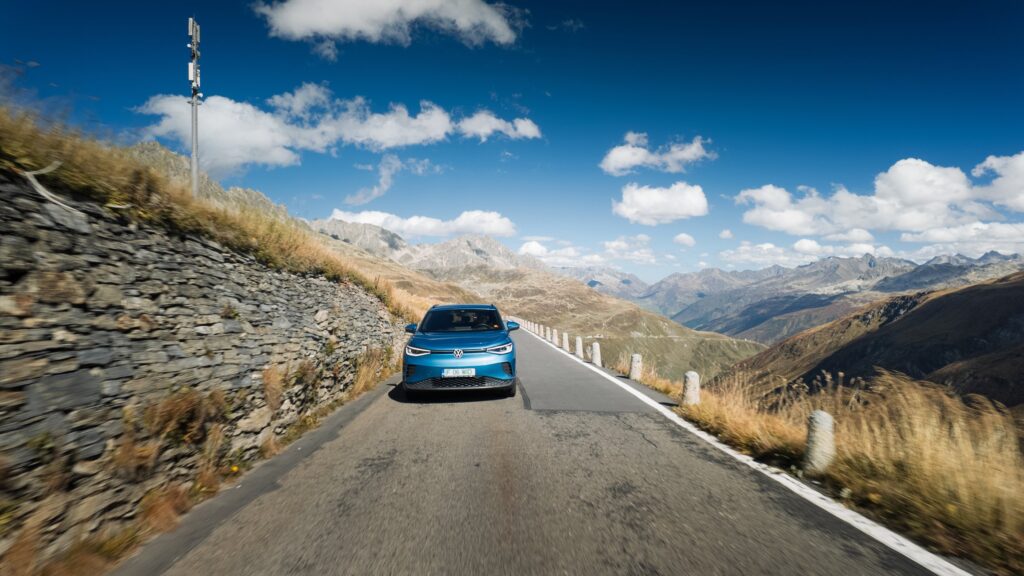
Alin Ionescu (Mașinistul)
While other manufacturers are just taking their first steps into the world of electric mobility, Volkswagen has largely overcome the problems they faced when debuting the ID range. And that makes the ID.4 one of the most homogeneous models in the EUROCHARGE. Spacious, comfortable, pleasant to drive and, above all, efficient, VW’s SUV meets the demands of electric customers and does so calmly, rationally, without emotion, but also without necessarily shining at anything in particular.
Although it has 286 hp, 545 Nm and a rear drive axle, the ID.4 doesn’t feel at all violent in the way it puts power on the road, with Volkswagen choosing to hone the engine’s resources at low speeds precisely to maximize comfort. On the other hand, the conservative attitude shows in the fuel consumption, with the German model being economical and managing to get a real range of 500 km from a moderate capacity 77 kWh battery. What’s more, the charging power of up to 175 kW is also confirmed in the real world, with the ID.4 pulling well every time it’s connected to a high-power station.
The interior of the ID.4, while ergonomic during driving, has a few lapses in the quality of materials used. In addition, the touch surfaces on the steering wheel or at the bottom of the center screen are not as intuitive as traditional buttons. Fortunately, the infotainment system has matured and responds well to commands and the interface is easy to use.
Overall, the ID.4 gives the impression of a model that has matured nicely, even if it’s still devoid of any excitement. On the “shut up and do” principle, the German model is capable, predictable – even satisfying for those who know exactly what they want from an electric.
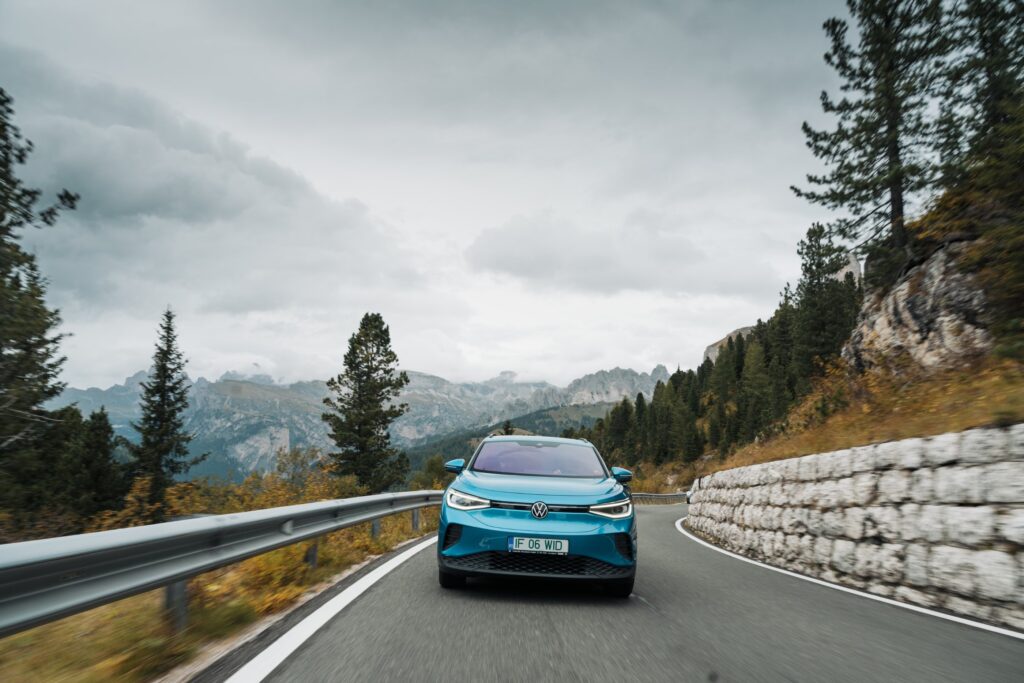
Laura Antonov (LaChicBoutique)
Not even the clear-sky color of the ID.4 could erase the sad feeling of the end of the EUROCHARGE 2025 adventure. I drove the ID.4 on the longest segment of the tour, Commezzadura – Szeget, so my impressions are more about the behavior on the highway (with a lot of stretches under construction), where I felt the support, through the assistance systems and the dynamics of the car.
It was a long day, in which we may not have needed all the stops for charging, but also the most conclusive test that, on the long haul, I more often need “fuel” – a single origin coffee (at VIVA), a snack, a dessert – than the ID.4 to charge.
If you analyze each figure like an accountant and weigh price, performance, interior space and other little details that matter when buying a car, you’ll get a plus. It may not be the car that impressed me the most design-wise out of the tour, but at the same time, on a rational analysis, it somehow manages to sneak onto the shortlist of options for a future electric. The design part was clearly offset by the new Costa Azur Metallic color, especially since I have a plethora of matching outfits in my wardrobe.
